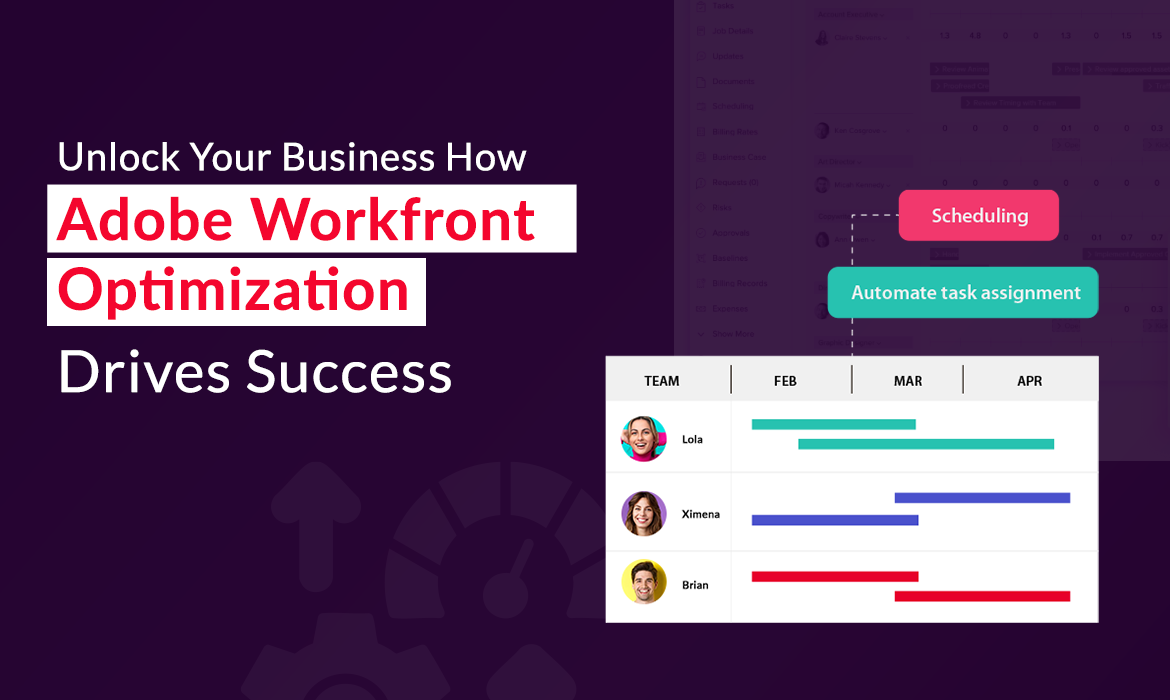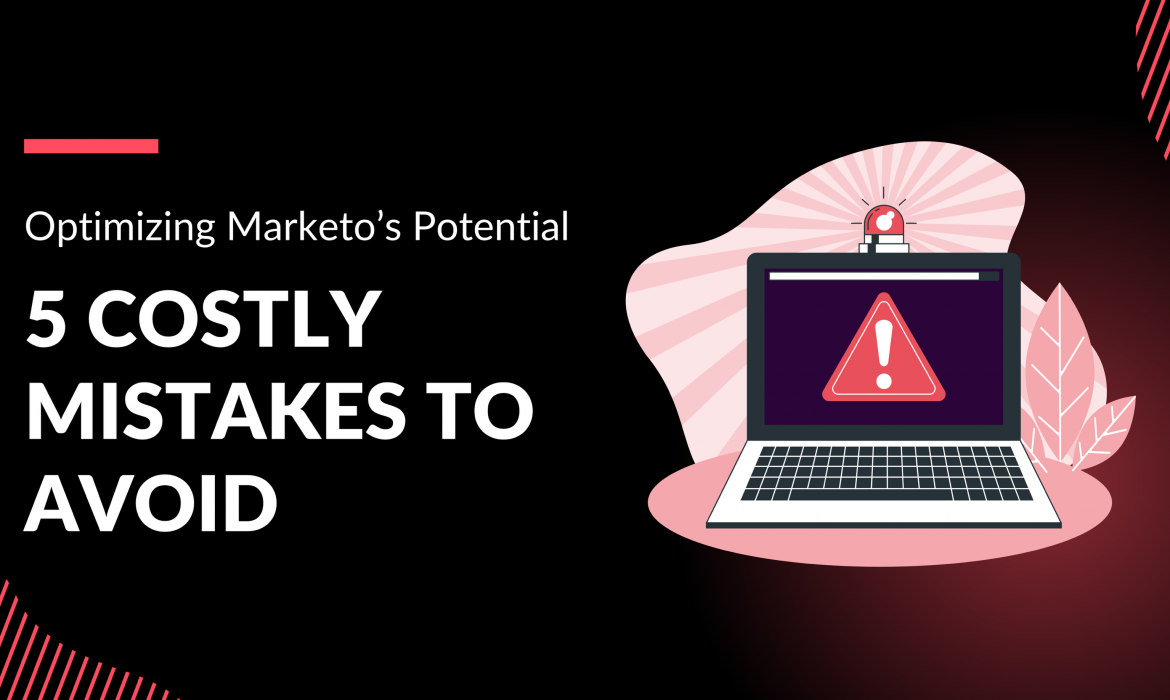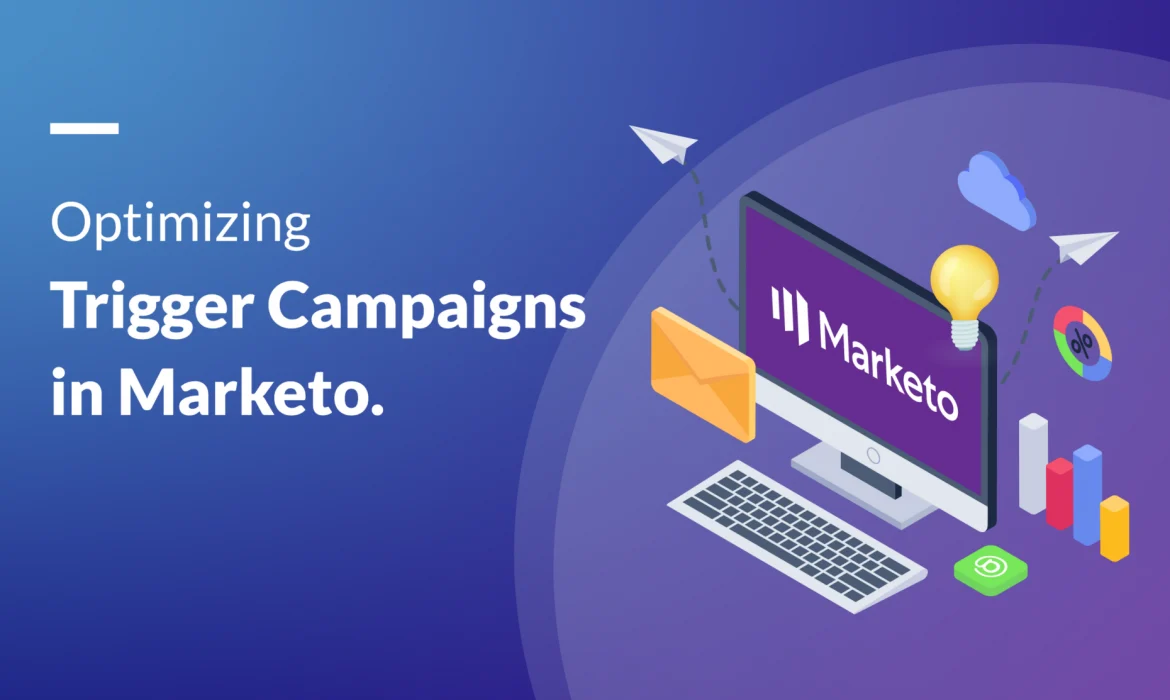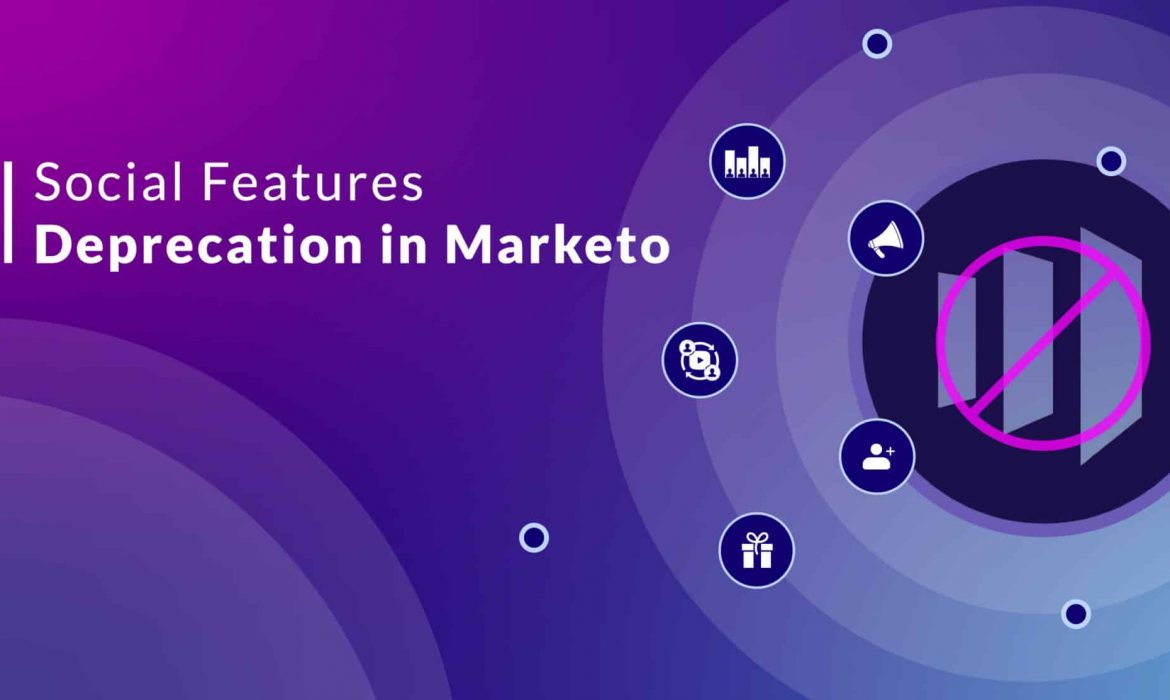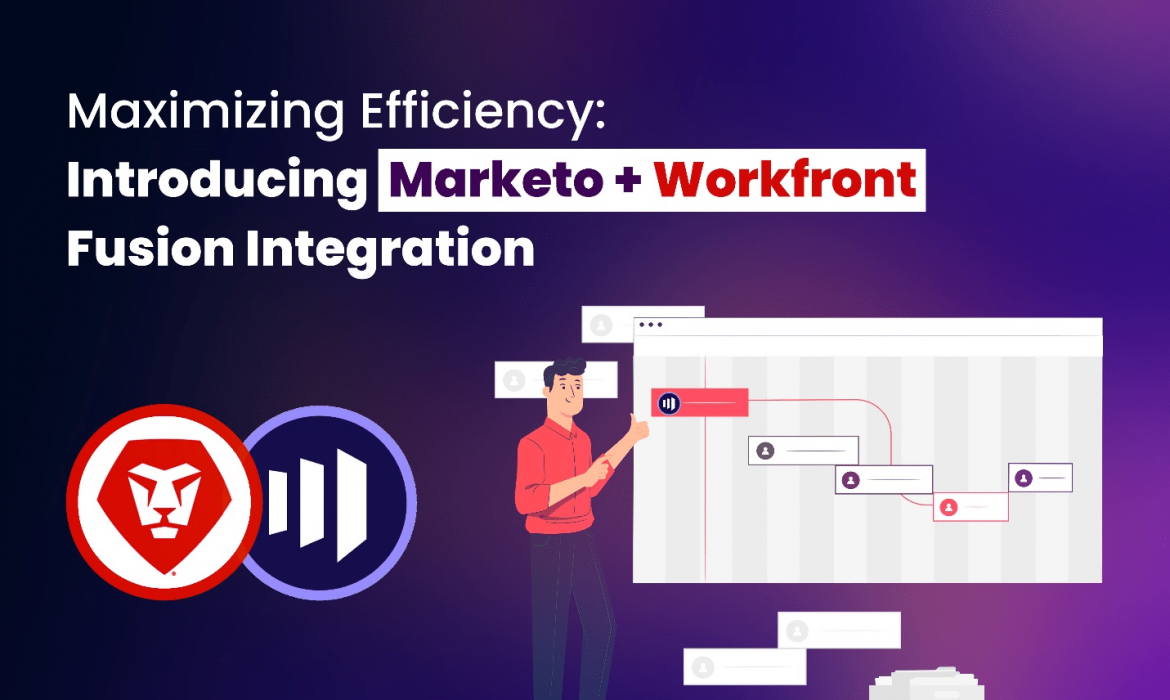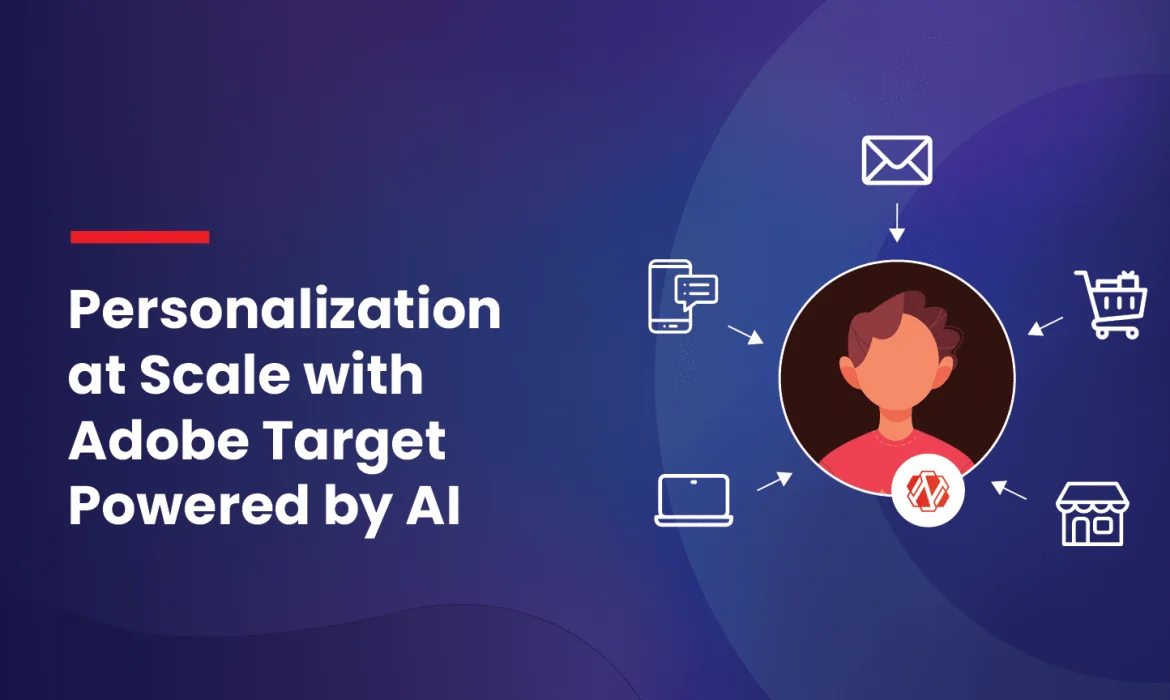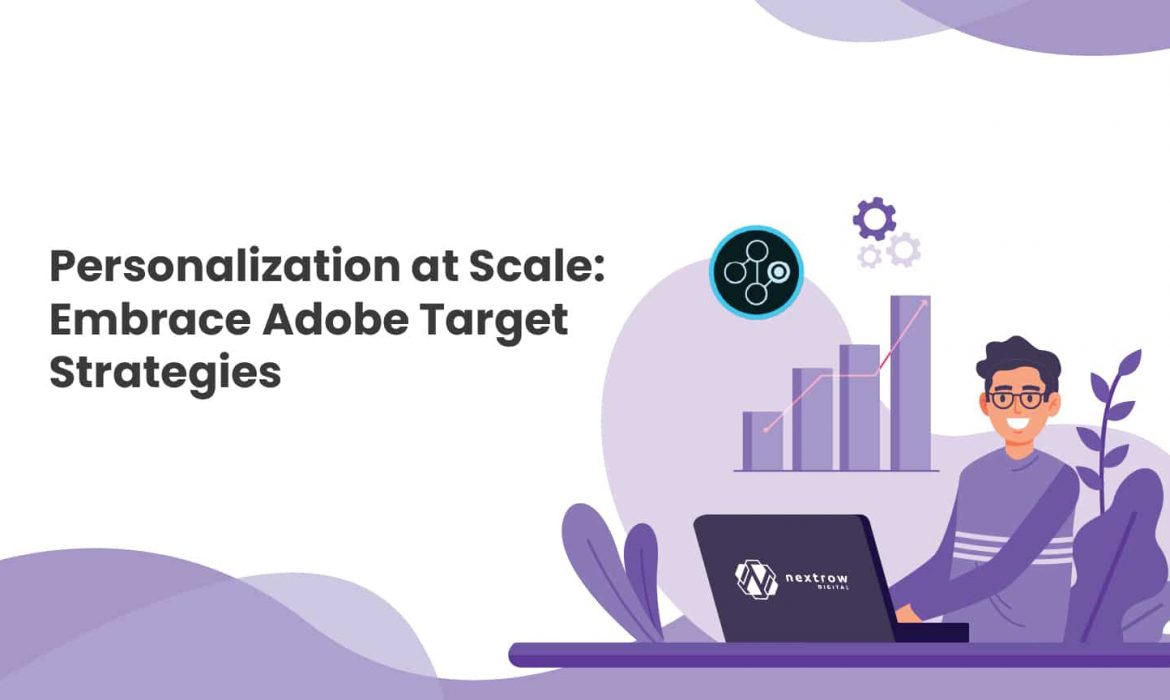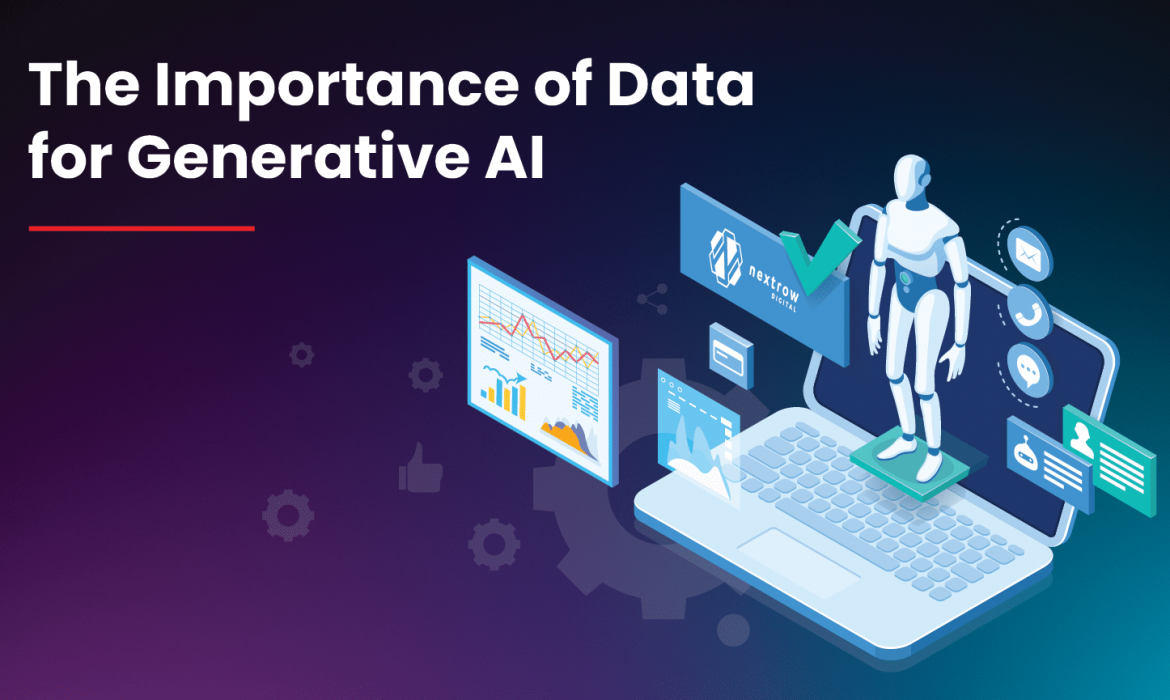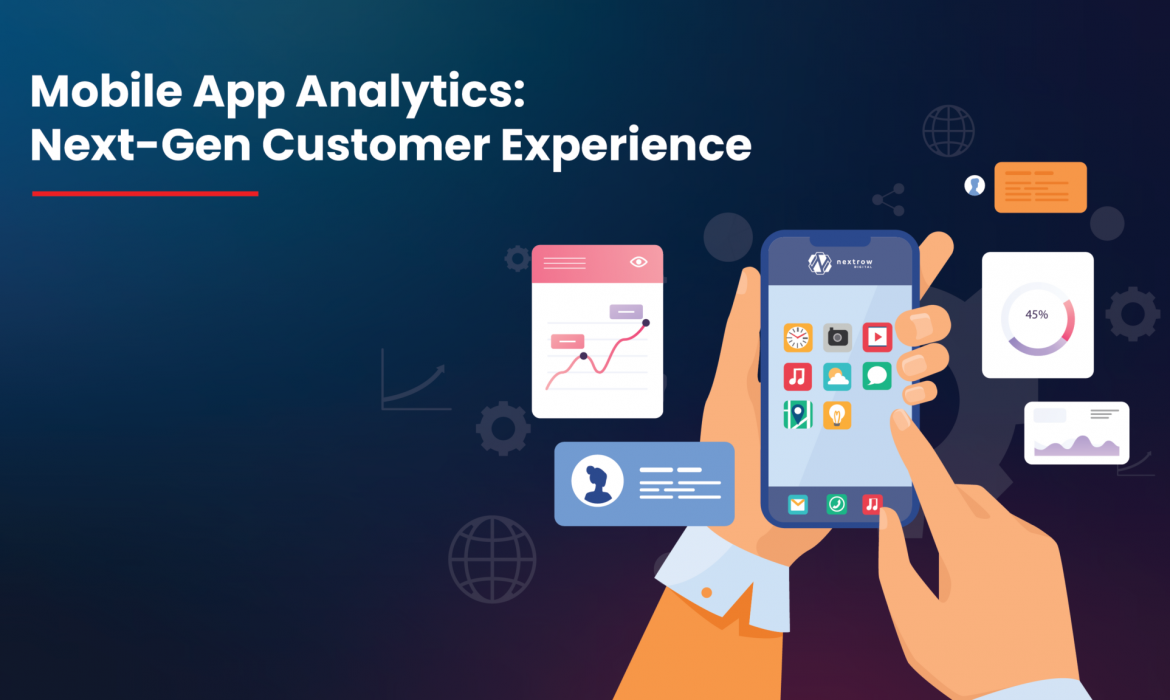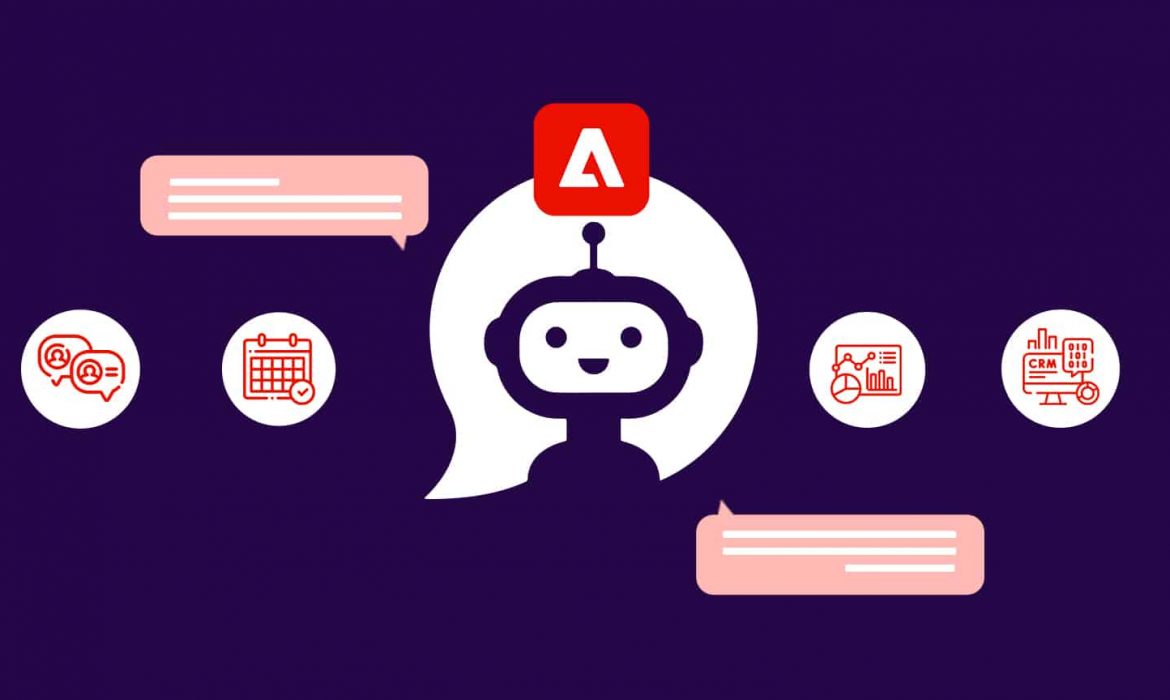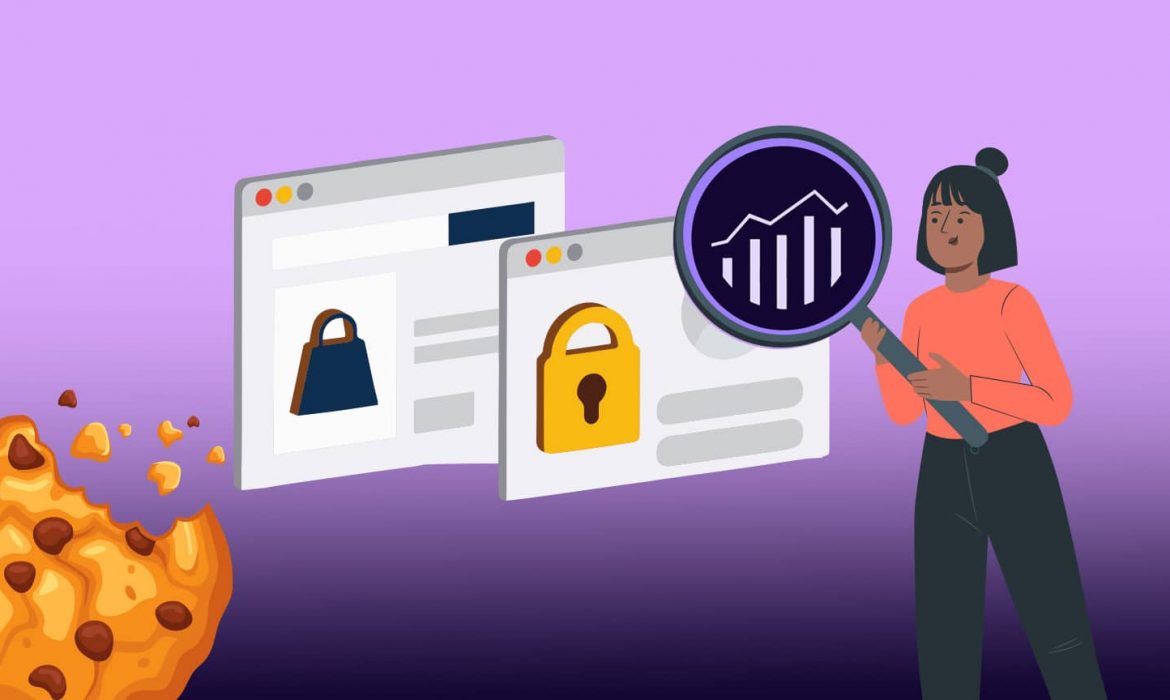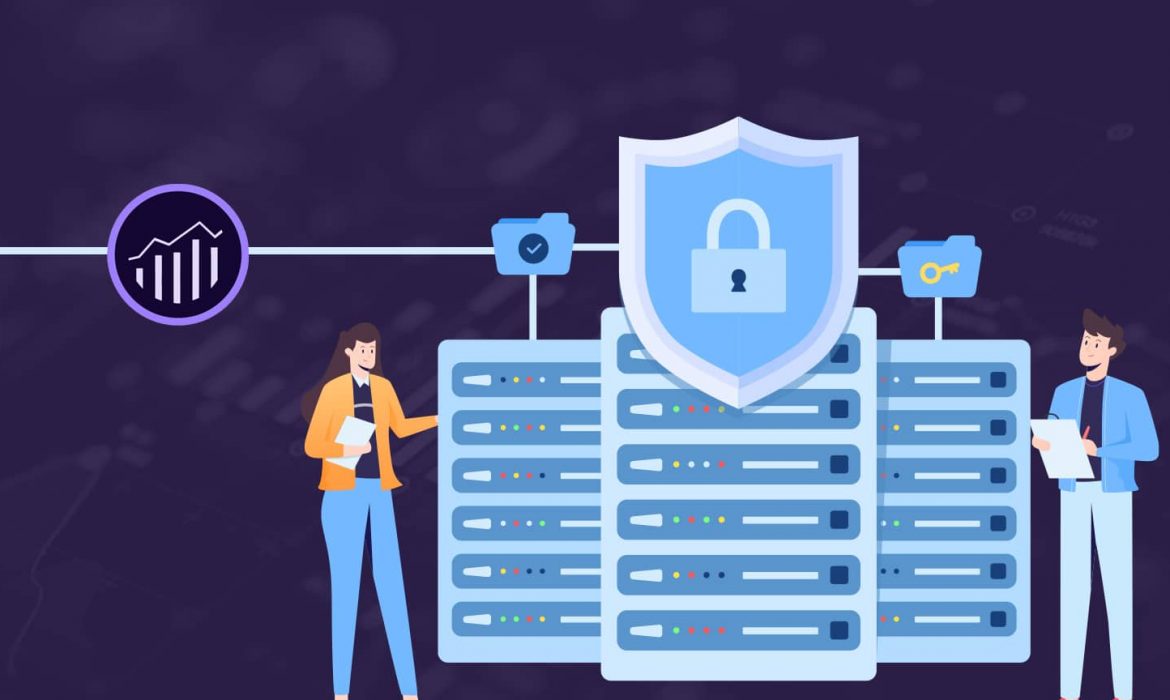Unlock Your Business Potential: How Adobe Workfront Optimization Drives Success
1. Enhanced Efficiency and Productivity:
- Streamlined Workflows: Optimization involves mapping out your existing processes within Workfront and identifying bottlenecks. By configuring workflows that automate repetitive tasks, standardize processes, and ensure the right information reaches the right people at the right time, you eliminate manual overhead and reduce wasted effort.
- Improved Resource Management: Optimizing resource allocation within Workfront allows you to gain a clear view of team capacity and availability. This enables you to assign tasks effectively, prevent overbooking, and ensure resources are utilized optimally, leading to increased productivity without burning out your team.
- Reduced Cycle Times: By automating approvals, streamlining communication, and providing clear visibility into project progress, Workfront optimization helps shorten project lifecycles. This means projects get completed faster, allowing you to bring products and services to market quicker and respond to market demands more agilely.
2. Improved Collaboration and Communication:
- Centralized Communication: Optimization ensures that all project-related communication happens within Workfront, eliminating scattered emails and lost information. This fosters transparency, reduces confusion, and ensures everyone is on the same page.
- Enhanced Visibility: Optimized dashboards and reporting provide real-time insights into project status, potential roadblocks, and team performance. This visibility empowers stakeholders to make informed decisions and proactively address issues, fostering better collaboration and accountability.
- Seamless Integration: Workfront’s ability to integrate with other key business applications (like CRM, marketing automation, and creative tools) is amplified through optimization. This ensures a smooth flow of information between systems, eliminating data silos and improving collaboration across departments.
3. Data-Driven Decision Making:
- Accurate Reporting and Analytics: Optimizing Workfront’s reporting capabilities allows you to track key performance indicators (KPIs) and gain valuable insights into project performance, resource utilization, and overall efficiency. This data empowers you to identify areas for improvement, measure the impact of changes, and make data-driven decisions that lead to better outcomes.
- Improved Forecasting: By analyzing historical data within Workfront, you can optimize your forecasting capabilities, allowing for more accurate project timelines, resource planning, and budget allocation. This reduces the risk of project delays and cost overruns.
4. Increased Accountability and Transparency:
- Clear Ownership and Responsibilities: Optimization involves clearly defining roles and responsibilities within Workfront, ensuring everyone knows who is accountable for what. This fosters a culture of ownership and reduces ambiguity.
- Trackable Progress and Performance: With optimized workflows and reporting, progress is easily trackable, and individual and team performance can be monitored fairly. This promotes accountability and encourages continuous improvement.
5. Enhanced Customer Satisfaction:
- Faster Time-to-Market: As mentioned earlier, Workfront optimization helps reduce project cycle times, allowing you to deliver products and services to customers faster.
- Improved Quality: Streamlined workflows and clear communication contribute to higher quality work and fewer errors.
- Better Project Delivery: Optimized project management processes ensure projects are delivered on time and within budget, leading to increased customer satisfaction.
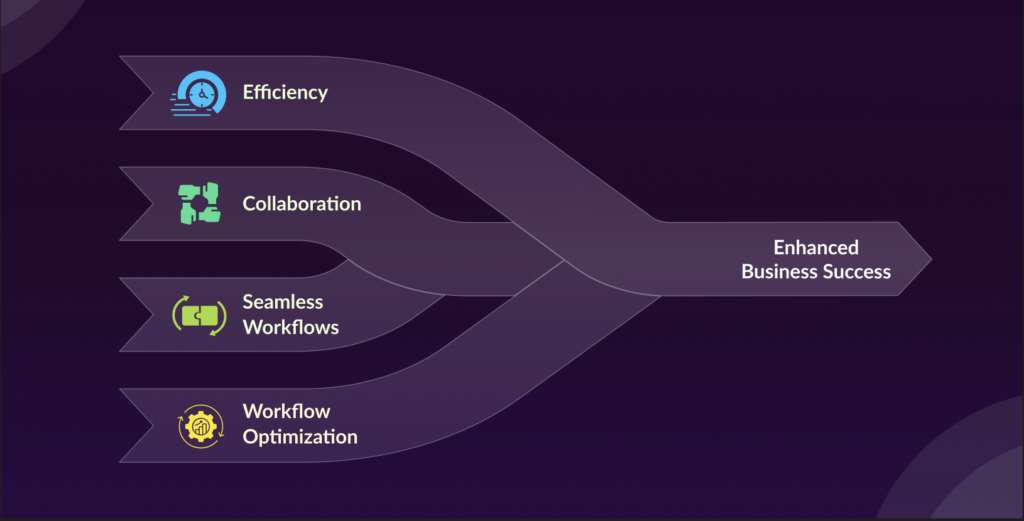
In conclusion, optimizing Adobe Workfront is not just about using the software; it’s about strategically configuring it to align with your unique business needs and goals. By focusing on streamlining workflows, improving collaboration, leveraging data, and fostering accountability, businesses can unlock the full potential of Workfront and achieve significant improvements in efficiency, productivity, and ultimately, their bottom line. Investing in Workfront optimization is an investment in the future success of your organization.
Is your business ready to experience the transformative power of optimized Adobe Workfront?
Optimizing Marketo’s Potential: 5 Costly Mistakes to Avoid
Adobe Marketo Engage is one of the most powerful marketing automation platforms available, helping businesses drive revenue growth and enhance customer engagement. However, even with its robust capabilities, common mistakes can limit its potential and hinder your return on investment (ROI). In this article, we’ll explore five costly pitfalls that could be affecting your Marketo performance and provide actionable solutions to overcome them.
1. Underutilizing Automated Workflows
Marketo’s automated workflows are essential for efficient lead management. Yet, many users fail to fully leverage this feature, resulting in missed engagement opportunities and a reliance on manual processes. By mapping out customer journeys and aligning workflows with user behaviors, you can automate timely, personalized interactions that will not only increase engagement but also improve conversions.
2. Neglecting Lead Nurturing
3. Inconsistent Segmentation
Segmentation is key to delivering the right message to the right audience. Outdated or inconsistent segmentation practices can result in misaligned communication, leading to lower engagement rates. By regularly updating your segmentation strategy based on behavioral and demographic data, you ensure that your campaigns are targeting the right audience with relevant messaging, thereby improving their effectiveness.
4. Poor Email Deliverability
5. Failing to Integrate Marketo with Other Platforms
Marketo’s full potential is realized when it’s integrated with CRM systems, social media platforms, and other marketing technologies. Failing to integrate these systems can lead to data silos, missed insights, and inefficiencies in your campaigns. By connecting Marketo with your tech stack, you enable seamless data sharing, improve audience targeting, and create a cohesive marketing ecosystem that drives business growth.
Also Explore: Adobe Marketo Consulting Services – NextRow Digital
The Impact of These Mistakes
Each of these mistakes can have a direct impact on your lead generation and conversion efforts. Underutilized workflows, poor lead nurturing, and inconsistent segmentation can cause valuable leads to slip through the cracks. Additionally, weak email deliverability and a lack of integration can impede your ability to make data-driven decisions, limiting your marketing effectiveness and stalling revenue growth.
Best Practices for Optimizing Marketo's Potential
To ensure you’re getting the most out of Marketo, implement the following best practices:
- Automate workflows to streamline lead management and improve engagement.
- Nurture leads with personalized follow-ups and content to maintain interest and build trust.
- Regularly update segmentation to ensure relevant and targeted messaging.
- Improve email deliverability by implementing best practices in list management and authentication.
- Integrate Marketo with other platforms to enable seamless data flow and enhance insights.
Unlock Marketo's Full Potential with NextRow
Optimizing Trigger Campaigns in Marketo: Best Practices for Enhanced Efficiency
Trigger campaigns are a cornerstone of Marketo’s capabilities, designed to enable real-time engagement with leads based on their specific actions. These campaigns respond to individual behaviors, making them a powerful tool for personalized marketing. However, managing these campaigns effectively is crucial to prevent performance issues such as slow evaluation processes and reduced overall efficiency. In this blog, we will delve into best practices for optimizing your trigger campaigns to ensure that Marketo operates at peak efficiency.
Understanding the Trigger Campaign Process
Marketo’s trigger campaigns continuously monitor lead activities and evaluate them against various criteria and filters. This process ensures that leads receive timely and relevant communication based on their actions, such as email opens or website visits. However, this real-time monitoring can create a high volume of evaluations, even for leads that don’t meet the criteria for engagement.
For instance, consider a scenario where 100 leads engage with an email across 10 active trigger campaigns. This interaction could result in up to 1,000 evaluations, placing significant strain on your system and potentially slowing down the overall performance. To mitigate such issues and enhance efficiency, it’s essential to implement best practices that streamline the evaluation process and optimize campaign performance.
Best Practices for Efficient Trigger Campaigns
- Regularly Review and Deactivate Unused Trigger Campaigns
One of the most effective ways to improve Marketo’s performance is to regularly review and deactivate trigger campaigns that are no longer in use. Every active trigger campaign consumes system resources and contributes to the evaluation load. By deactivating campaigns that are outdated or irrelevant, you reduce the number of active monitors and minimize unnecessary evaluations.
While Marketo automatically deactivates smart campaigns that have been dormant for six months, it’s a good practice to manually review and deactivate campaigns as needed. This proactive approach ensures that only relevant and active campaigns are consuming resources, leading to a more streamlined and efficient system. - Convert Trigger Campaigns to Batch Campaigns When Immediate Responses Aren’t Required
Not all campaigns need to be executed in real-time. For activities that do not require immediate responses, consider converting trigger campaigns into batch campaigns. Batch campaigns are processed differently from trigger campaigns and can be scheduled to run during off-peak hours, such as overnight.
By using batch campaigns for tasks that don’t need instant engagement, you reduce the load on trigger qualifiers and allow your system to operate more efficiently. This approach helps balance the processing demands and ensures that high-priority trigger campaigns can function without delays. - Utilize Marketo’s Built-In Features for Campaign Management
Marketo offers several built-in features designed to help manage and optimize trigger campaigns. One such feature is campaign prioritization, which allows you to set the order in which campaigns are evaluated. By prioritizing high-impact campaigns, you ensure that they receive the necessary attention and resources, while less critical campaigns are processed with lower priority.
Additionally, leveraging Marketo’s reporting, and analytics tools can provide insights into campaign performance and efficiency. Use these insights to make data-driven decisions about which campaigns to refine or deactivate, and to understand the overall impact of your optimizations.
Implementing Best Practices with Expert Support
Implementing these best practices can significantly enhance the performance of your trigger campaigns and improve overall system efficiency. However, optimizing trigger campaigns is just one part of a broader strategy for effective marketing automation. To fully leverage Marketo’s capabilities, consider partnering with experts who can provide tailored support and advanced insights.
At NextRow, we enhance your Marketo environment to ensure peak performance and alignment with your marketing goals by expertly designing and refining workflows. We create highly targeted trigger campaigns to drive engagement and conversions and conduct in-depth analysis to address performance gaps and optimize impact. Our training and ongoing support empower your team to fully utilize Marketo’s features for maximum ROI, ensuring your setup effectively engages leads and achieves your marketing objectives.
Contact us today to explore how our Marketo services can elevate your marketing automation strategy and drive greater success in your campaigns.
Social Features Deprecation in Marketo
Adobe is making significant changes to Marketo Engage to enhance the platform’s performance and focus on popular features. Effective July 31, 2024, Adobe begun deprecating several social features as part of its efforts to optimize Marketo Engage. This update aims to streamline resources, boost performance, and direct attention toward more widely used features.
The following social features will be deprecated:
- Polls
- Social Buttons
- Referral Offer
- Video Share
- Sweepstakes
Reasons for Deprecation
- By phasing out low-usage features, Adobe aims to enhance the overall performance of Marketo Engage. This change will allow the platform to operate more efficiently and reliably.
- Resources and development efforts will be redirected to support and enhance features that are more commonly used, ensuring they receive regular updates and improvements.
- The deprecation of these features will help Adobe reallocate resources towards product maintenance and growth, contributing to a more robust and future-ready platform.
Here’s what to expect with the upcoming changes:
- July 31, 2024: The creation, cloning, and embedding of new social features should be disabled. However, existing social assets will continue to function as usual.
- January 31, 2025: Support for existing social assets will be limited. While these assets will still work, Adobe will not provide full support or updates for them.
- February 1, 2025: All deprecated social features will cease to function. Social features embedded in Landing Pages will need to be removed by this date to avoid disruptions.
To prepare for these changes, review your Marketo Engage – Identify and remove deprecated social features from your Landing Pages.
Alternatives to Deprecated Social Features in Marketo Engage Polls
Survey Tools: Utilize external survey tools such as SurveyMonkey, Typeform, or Google Forms. These platforms offer advanced survey functionalities and can be integrated with Marketo via APIs or embedded links.
Feedback Widgets: Implement feedback widgets or forms on your website or landing pages to gather user input in real-time.
Social Buttons: Social Sharing Plugins: Use third-party social sharing plugins or tools like AddThis or ShareThis. These plugins can be easily integrated into your website and landing pages to enable social sharing.
Custom Social Links: Create custom social media buttons using HTML and CSS. These can be manually added to your emails and landing pages to direct users to your social media profiles.
Referral Offer: Referral Programs: Implement dedicated referral program software such as Referral Candy, Referral Rock, or Yotpo. These platforms offer robust features for managing and tracking referral programs, which can be integrated with Marketo through APIs.
Incentive Management Tools: Use incentive management tools that provide similar functionalities to referral offers, allowing you to create and manage referral campaigns.
Video Share: Video Hosting Platforms: Use video hosting platforms like YouTube, Vimeo, or Wistia to host and share your videos. These platforms offer robust sharing options and can be embedded into your Marketo assets.
Social Media Channels: Share videos directly through your social media channels. Most social media platforms support video uploads and offer native sharing options.
Sweepstakes: Sweepstakes Platforms: Consider using dedicated sweepstakes and contest platforms such as Gleam, Rafflecopter, or Woobox. These tools provide comprehensive features for creating, managing, and promoting sweepstakes and can be integrated with Marketo for data collection.
Integration with Marketo
APIs and Webhooks: Integrate third-party tools with Marketo using APIs or webhooks to ensure data flows seamlessly between platforms.
Custom Scripts: Use custom scripts or integration platforms like Zapier to connect external tools with Marketo, enabling automated data exchange and functionality.
As Marketo Engage evolves, staying up to date with the latest changes and best practices is crucial for maximizing your investment in the platform. At NextRow, we are committed to helping you navigate these updates seamlessly. Our team of experts can assist with:
- We can help you migrate away from deprecated social features and optimize your setup for continued success.
- We can develop and implement alternative social engagement solutions that fit your needs and enhance your marketing efforts.
- Our ongoing support ensures that you continue to make the most of Marketo Engage, with expert guidance and optimization tailored to your goals.
Don’t let the deprecation of features disrupt your marketing automation. Partner with NextRow to ensure a smooth transition, maintain continuity, and fully leverage the capabilities of Marketo Engage. Stay ahead of the curve and make the most of your Marketo Engage investment with our expert support.
Maximizing Efficiency: Introducing Marketo + Workfront Fusion
Marketo is a great Marketing Automation platform. Marketo helps marketers automate the many aspects of marketing campaigns, however, the automation is limited to functionalities within Marketo. For any marketing campaigns to be successful, marketing managers would have to co-ordinate with multiple teams, ranging from internal creative teams to external marketing agencies. Most marketing managers rely on multitude of tools for co-ordination, which makes their life complicated. There are many tools in the market which eases marketers’ pain by automating to some extent. Smartsheet is one of such tools, which greatly helps, but being a 3rd party tool, it has some limitations.
Why Workfront?
Adobe has built great tools to help marketers. However, one thing they distinctively lack was in project management space. With Adobe’s acquisition of Workfront in 2020, Adobe addressed the problem head on. With Marketo and Workfront under their belt, Adobe started building native integrations for Workfront to ease the Marketers pain. Marketo is a tool for managing marketing activities such as personalized communications and campaign creation. And Workfront is useful in managing projects and teamwork. Combining these two systems can transform the marketing operations.
Introducing Marketo + Workfront Fusion
Marketo+Workfront Fusion bridges the gap between project management and marketing while synchronizing tasks, projects, and assets between Workfront and Marketo. This makes it easier to manage progress and automate project creation.
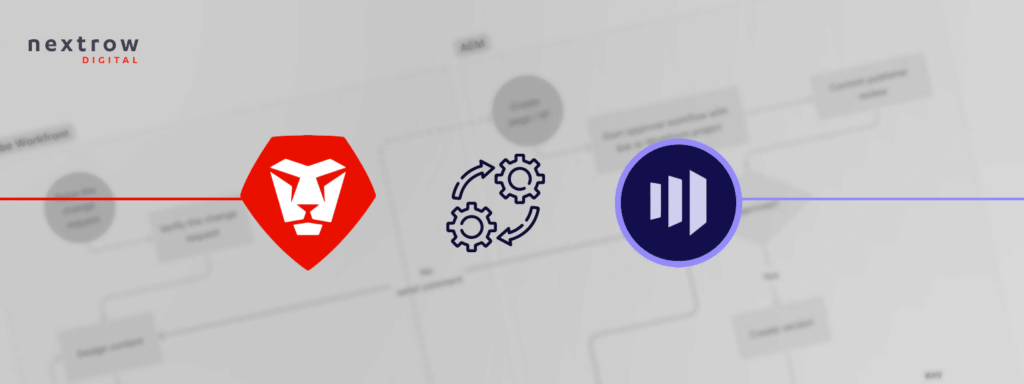
Advantages of Marketo + Workfront Fusion
- Streamlined Collaboration: Facilitating the seamless integration of projects, tasks, and assets promotes teamwork and keeps everyone in sync.
- Enhanced Reporting: Cross-system measurements make it possible to report data accurately and make wise decisions.
- Seamless Data Flow: Bi-directional connectivity facilitates seamless data flow between Workfront and Marketo Engage, enabling teams to operate more productively rather than laboriously.
- Advanced Automation: Business rules and triggers also automate crucial procedures, which lowers the need for human intervention and boosts productivity.
Exploring Marketo + Workfront Fusion Features
- Smooth Project Integration: For smooth cooperation and visibility, align projects, epics, stories, tasks, and attachments between the Marketo and Workfront platforms.
- Reporting Flexibility: With integrated reporting options, you may get insights into cost tracking, resource utilization, and project performance data.
- Customization Options: You may easily set up process rules and naming standards to meet your company’s needs.
- Bi-Directional Flow: Fusion allows data to flow freely in both ways, guaranteeing everyone access to the most recent data.
- Document and Asset Harmony: Increase productivity and remove confusion by synchronizing documents and assets, keeping all parties on the same page.
- Automate with Ease: Set up rules and triggers to automate chores and procedures and optimize your workflow.
- Connect On-Premises: Ensure safe and effective data sharing by integrating Fusion with on-premises systems in a seamless manner.
- No Code, No Problem: Fusion’s no-code platform enables business users to establish powerful integrations easily, so say goodbye to complicated coding.
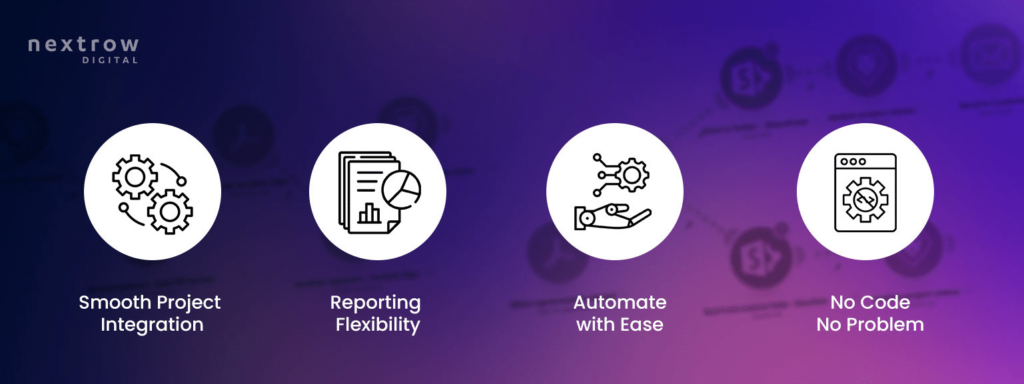
How Marketo + Workfront Fusion Works
- Establish Connection: Connect your Marketo account to Workfront Fusion to facilitate seamless data interchange.
- Data Mapping: This stage entails mapping data fields between Marketo and Workfront to ensure smooth data transmission by business processes.
- Triggers: Take proactive measures to ensure that triggers, encompassing events and records, initiate scenarios upon record creation or update.
- Actions: Add personal touches to operations by implementing unique API calls, generating or editing records, and file management.
- Actions: Add personal touches to operations by implementing unique API calls, generating or editing records, and file management.
- Recognizing Access Requirements: To optimize the advantages of Marketo modules and meet all access requirements, such as having the proper Adobe Workfront plan and licenses.
Conclusion
For companies looking to increase efficiency and optimize processes, integrating Workfront Fusion with Marketo has enormous potential.
Picture yourself in a position where seamlessly integrating your marketing and project management operations maximizes success and efficiency. To turn that idea into a reality, NextRow is here. Join us as we go forward and utilize the Marketo+Workfront Fusion combination to realize your company’s full potential.
Adobe Target: Personalization at scale Powered by AI
How to meet customer expectations at the right place and time, every time? Let’s find an answer!
Ensuring that you consistently optimally meet customer expectations requires a strategic approach. Let’s explore a quick exercise to highlight the significance of personalization at scale in this context. Please take a moment to pause your current activity and engage with someone you know by using their name. Notice the immediate impact—it grabs their attention and triggers a positive response, courtesy of feel-good hormones like dopamine and serotonin. This simple act communicates its importance to you and sets the stage for the importance of what you’re about to convey.
Enter new Adobe Target World – Personalization at Scale
In an era of customer experience, personalization extends beyond mere name usage. It involves accompanying customers at every step of their journey, anticipating their needs before they even realize them, and delivering precisely what they require exactly when and where they need it. The true power of personalization at scale lies in making every individual feel recognized and comprehended.
To boost customer experience, personalization must operate at a scale, seamlessly catering to the needs of hundreds, thousands, or even millions of customers in real time, regardless of their location. This level of personalization is not just a futuristic concept—it’s actively unfolding in the present.
In substance, personalization is about providing a tailored experience to the right customer through the right channel. Taking it a step further, personalization at scale is the ability to accomplish this for every customer across every channel in real time. This approach signifies the future of customer experience, and the exciting part is—it’s happening now.
The key ingredients? Flexibility and speed
The concept of personalization is not new, but in today’s dynamic landscape, it has evolved into a critical aspect of customer engagement. The multitude of opportunities to connect with customers in meaningful ways and cater to their unique needs has never been more abundant. Simultaneously, customer expectations have reached new heights, demanding businesses to execute personalized strategies on a massive scale.
Consider the scenario where a customer seamlessly transitions from online engagement with your app to seeking assistance from an in-store sales associate. They anticipate a continuous and personalized experience throughout this journey. Whether they’ve recently favorited a stylish blue polar fleece tracksuit or it’s their birthday month, customers expect businesses to keep pace and respond accordingly. Imagine having a 20% off coupon for tracksuits ready for them at checkout—it’s the kind of personalized touch that leaves a lasting impression.
Revolutionize the way you connect with your customers!
Five personalization challenges to plan for your Business
Challenge 1: Extracting the Power of Data
Data is the backbone of personalization, but its potential often remains untapped. Many brands struggle to convert data into actionable insights due to inadequate data management. This is reflected in the fact that 78% of marketing organizations, as per Adobe’s 2022 Marketing Organization Performance Index, feel ineffective in utilizing data. The solution lies in consolidating customer and account data into a unified platform, powered by AI and machine learning. This integration not only enhances understanding but also facilitates the creation of personalized experiences, potentially adding $5.6 billion (about $17 per person in the US) in revenue within six months.
Challenge 2: Building Trust Alongside Data
As custodians of vast amounts of data, businesses must prioritize security and privacy. Adobe’s 2022 Trust Report reveals that 72% of consumers lose trust in brands due to poor personalization execution, leading to potential long-term damage. With the phasing out of third-party cookies, first-party data gains precedence. Investing in tools that securely leverage first-party data is crucial to building and maintaining trust, especially in a future without cookies.
Challenge 3: Content Proliferation
The demand for personalized content across diverse channels poses a significant challenge. Organizations grapple with fragmented content operations, hindering collaboration and productivity. To address this, businesses need a centralized platform for content creation, delivery, and optimization. Streamlining these processes is essential for meeting the increasing demands of personalization at scale.
Challenge 4: Consistency Across Touchpoints
Maintaining a consistent and connected customer experience is paramount. Businesses often struggle to deliver personalized experiences across various touchpoints, risking customer disengagement. A mere 12% of companies currently make nearly all customer experience decisions in real-time, highlighting the gap in personalizing the entire customer journey. An integrated digital infrastructure that acts on real-time data across all customer interactions is the key to addressing this challenge.
Challenge 5: Scaling Personalization Effectively
While personalization at scale proves its value, scaling it can be overwhelming for many brands. The uncertainty around required systems, technologies, and processes can hinder progress. However, a well-defined strategy is the solution. With a solid plan in place, scaling personalization becomes more manageable, ensuring a seamless transition from initial efforts to a comprehensive and effective personalization approach.
Must Read Stats
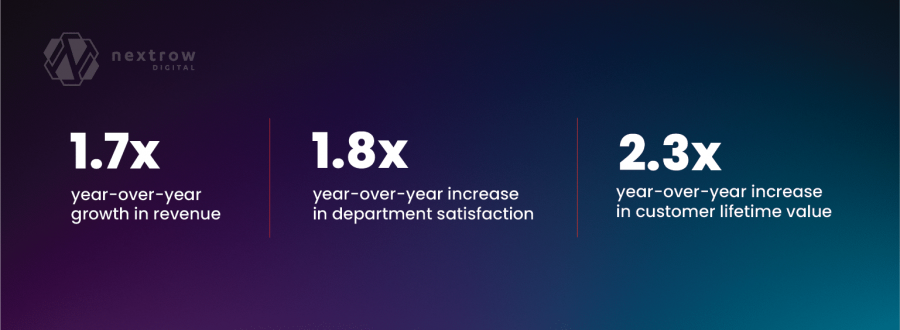
The study emphasizes the tangible benefits of personalized experiences, ranging from financial gains to employee satisfaction and superior performance throughout the customer journey.
- Commissioned by Adobe, a Forrester Consulting study reveals the significant ROI of one-to-one personalization at scale.
- Companies investing in improving customer experience outpaced others in revenue growth.
- Experience-focused organizations grew revenue 1.7 times faster in 2021.
- Prioritizing customer experience increased customer lifetime value by 2.3 times compared to digital laggards.
- Experience-driven businesses not only excel financially but also boast happier employees.
- Across the entire customer lifecycle, experience-led organizations outperform in attraction, retention, and advocacy.
Make Digital More Personal with Adobe Target NextRow Services
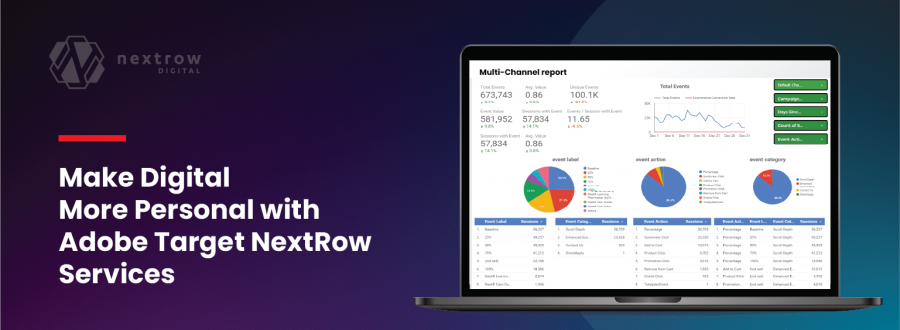
Even with a vast customer base, personalization can be the key to forging a profound bond with everyone. By making strategic personalization choices, you not only gain insights into your customers but also earn their trust, leading to enhanced acquisition, satisfaction, and retention rates.
NextRow has the potential of personalization to revolutionize your digital interactions and create unparalleled customer experiences. Here’s how our experts Adobe Target guide can help you on this transformative journey:
- Harness the Power of Data: Utilize cutting-edge technologies for data collection, insights, and profile creation. Maximize the value of your data to truly understand your customers.
- Build a Robust Content Delivery Engine: Establish a scalable engine with industry-leading solutions for content production, collaboration, delivery, and optimization. Ensure your content resonates across various channels.
- Craft Seamless Personalized Journeys: Leverage technologies designed for omnichannel orchestration at every phase of the customer lifecycle. Create journeys that seamlessly adapt to individual preferences and behaviors.
- Embrace Cultural and Operational Change: Implement the necessary changes in culture and operations to stay agile and respond swiftly to evolving customer expectations and market dynamics. Stay ahead of the curve in this fast-paced digital landscape.
With Adobe’s comprehensive solutions, you can not only meet but exceed your digital transformation needs. Discover how our expertise can support your journey and help you achieve unparalleled personalization at scale goals.
Get Started with Personalization at Scale | Adobe Target Services Powered by NextRow
In our previous blog we explored the world of personalization at scale with Adobe Target powered by AI. We learnt how to elevate customer engagement intelligently. Moreover, we understood how NextRow experts can guide you through challenges, harness data, and create seamless personalized journeys and how to make digital more personal with Adobe Target services. Now is the time to go ahead and know the four-strategies on which personalization at scale hinges. Let’s scroll the blog to know our answer!
Before that if you’re crafting your personalization plan keep these principles in focus:
- Make your data actionable—it’s built for action.
- Instill trust by letting value lead every interaction.
- Ensure a seamless journey with no breaks.
- Understand the context behind every move.
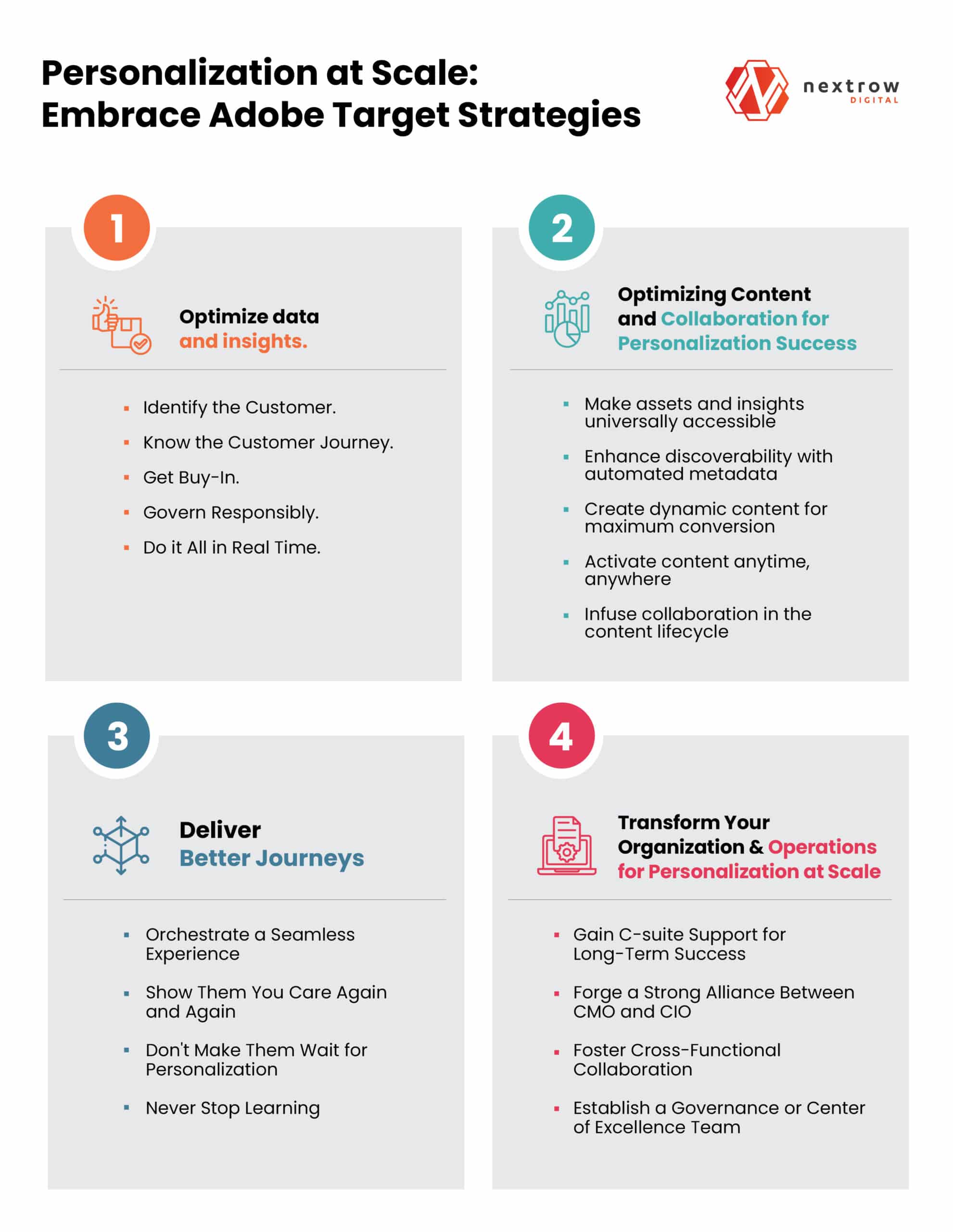
Strategy 1: Optimize data and insights.
In today’s dynamic business landscape, scaling personalization requires a strategic investment in a robust data and insights platform. This platform should seamlessly integrate customer experience data from various channels into a unified model, ensuring real-time delivery of optimal experiences. The days of scattered data across different platforms are gone; now, it’s crucial to centralize data in a flexible, unified model for effective targeting and personalization.
a) Identify the Customer.
- Integrate data from all communication channels to create a unified customer profile.
- Enable the integration of customer and account profiles with other experience technologies.
- Build and activate profiles in real time on relevant platforms.
b) Know the Customer Journey.
- Gain a comprehensive understanding of the customer journey across all channels.
- Utilize technology to collect, combine, query, and visualize data in real time.
- Leverage AI to improve the speed of acting on customer insights, a critical aspect often overlooked by businesses.
c) Get Buy-In.
- Establish a first-party data foundation to reduce dependence on third-party cookies.
- Emphasize the importance of customer retention as acquisition costs are expected to rise.
- Utilize first-party data to personalize experiences, enhance customer loyalty, and inform strategic decisions.
d) Govern Responsibly.
- Acknowledge the responsibility to protect customer data and deliver meaningful experiences.
- Implement a data governance framework to ensure privacy rules are consistently applied.
- Address the challenge of managing and enforcing data usage appropriately.
e) Do it All in Real Time.
- Integrate technology systems into a cohesive martech stack for improved customer experiences.
- Achieve a seamless flow of data to minimize latency and disjointed experiences.
- Emphasize the importance of real-time processing for delivering personalized customer experiences in milliseconds.
Pro Tip: Investing in these key aspects ensures a data-driven approach to personalization, setting the stage for enhanced customer experiences and a competitive edge in the market.
Strategy 2: Optimizing Content and Collaboration for Personalization Success
To truly connect with customers on a personal level, you must offer them something valuable—be it a coupon, an informative guide, a how-to video, or a downloadable link. This valuable offering revolves around content. Leveraging customer experience data, you can craft, deliver, and refine personalized content tailored to specific market segments. However, achieving this level of personalization requires a robust content production machine that seamlessly integrates every stage of the content lifecycle.
a) Make assets and insights universally accessible
As you scale your content for personalization, efficient creative asset management becomes crucial. With a myriad of assets available, ranging from logos to videos, finding the right message becomes challenging. A centralized content hub accessible to all teams ensures quick access to the necessary content. This hub should also incorporate version control, ensuring everyone uses the latest and most effective assets, thereby driving cost savings.
b) Enhance discoverability with automated metadata
Establishing an organized hub involves populating metadata automatically, minimizing wasted efforts and redundant work. By keeping insights open to everyone, teams can measure content performance at the asset level, gaining valuable insights that inform future content creation.
c) Create dynamic content for maximum conversion
The goal of content is conversion. AI enables the creation of dynamic content that adapts in real time to customer actions, behaviors, and needs. Personalize email content, tailor promotional offers, and serve customized content blocks on landing pages based on customer preferences or past purchases. Implement behavior-triggered notifications, such as in-store promotions, through SMS.
d) Activate content anytime, anywhere
After assembling dynamic content, the next step is delivering it to the right destination—website, mobile app, social media, digital sign, IoT devices, etc.—at the precise moment the customer desires it. Activating the most relevant content at the perfect occasion transforms engagement into profits. Empower your content production machine with technology to deliver dynamic content in real time via API across the entire customer journey.
e) Infuse collaboration in the content lifecycle
With the hybrid work model becoming a permanent fixture, collaboration needs new modes. A work management system connects projects to strategic imperatives, allowing teams to collaborate from anywhere. Centralizing work provides every team member with a comprehensive view from strategy to results, fostering clarity and agility. Integration with creative tools accelerates work velocity without compromising compliance or quality standards.
Are you crafting your personalization plan?
Strategy 3: Deliver Better Journeys
Customers today encounter brands through various channels, from stores and online platforms to apps, emails, and social media. Navigating these channels requires marketers to orchestrate seamless and personalized experiences throughout the entire customer lifecycle.
a) Orchestrate a Seamless Experience
Coordinating customer journeys in real time across multiple channels is crucial for sustained engagement. Omnichannel orchestration, the ability to create cohesive experiences across web, mobile, email, chat, SMS, and more, ensures customers seamlessly transition between interactions. Managing personalized omnichannel journeys becomes complex with diverse tools, but a unified interface simplifies the process. This allows for real-time personalized interactions and scheduled audience-based messages from a single platform, catering even to non-technical users.
b) Show Them You Care Again and Again
Building customer loyalty involves continuous personalized interactions. From the first interaction, maintaining a personalized approach for guests, subscribers, buyers, and others throughout their lifecycle is essential. Leveraging technology, such as a customer data platform (CDP), provides a comprehensive view of the customer journey. This platform integrates data securely, incorporates AI for segmentation, orchestrates marketing messages, and guides customers through both physical and digital channels.
c) Don’t Make Them Wait for Personalization
Given the average person’s eight-second attention span, reacting to behavioral data in real time is crucial for delivering better journeys. AI and machine learning come into play here, predicting customer actions and providing personalized recommendations and content at scale. Speed is the essence, and leveraging technology allows brands to meet customer expectations promptly.
d) Never Stop Learning
To refine personalized experiences, A/B/n testing is indispensable. This method, testing multiple variations of content and experiences, helps identify what resonates best with customers. Choosing a testing tool that accommodates numerous variations and includes a visual experience editor streamlines the testing process. Continuous learning from testing outcomes enhances key performance indicators and overall business outcomes.
Strategy 4: Transform Your Organization and Operations for Personalization at Scale
Achieving personalization at scale requires a strategic overhaul of your organization and operational capabilities.
a) Gain C-suite Support for Long-Term Success
Personalizing the customer journey for millions demands time and commitment. Building capabilities across channels is a journey that might span years. The critical factor here is top-down support from C-suite executives. These leaders play a pivotal role in aligning strategies with enterprise business goals, securing funding, and advocating for organization-wide transformation.
b) Forge a Strong Alliance Between CMO and CIO
The synergy between Chief Marketing Officers (CMOs) and Chief Information Officers (CIOs) is the linchpin of successful personalization. CIOs are the architects of the technology enabling personalization, while CMOs craft personalized experiences powered by that technology. A close partnership between these leaders ensures agility in adapting to evolving customer expectations and needs. A shared vision translates into more creative, agile, and innovative customer experiences.
c) Foster Cross-Functional Collaboration
Effective collaboration must extend beyond the C-suite and permeate throughout the organization. Unfortunately, recent surveys reveal a gap in collaboration between marketing and IT teams. Senior executives and their teams need to work collaboratively to execute personalization strategies. Regular check-ins, open communication, and breaking down silos are essential. According to Adobe’s 2022 Digital Trends report, 65% of senior executives feel there is more work to be done to break down silos created by organizational structures and competing KPIs.
d) Establish a Governance or Center of Excellence Team
Empower a dedicated team of business and tech executives to spearhead your digital transformation. This governance or center of excellence team takes charge of mapping out the strategy, prioritizing capabilities, developing a business case, and crafting a step-by-step implementation plan. They are instrumental in restructuring business processes and identifying organizational changes required to usher in personalization at scale.
Final Words
Learn how NextRow lets you deliver personalized experiences to each customer with Adobe Target Services! We provide Personalize and optimize customer experiences with Adobe Target. Roll out the best-tailored experiences to the audience with A/B testing, multi variance testing, user behavior, and personal recommendations with our proven strategies.
Got Questions on NextRow Strategies for Adobe Target?
The Importance of Data for GenAI
In the ever-evolving landscape of technology, generative artificial intelligence (GenAI) stands at the forefront of innovation. Its ability to create original content has brought about revolutionary changes across industries, including marketing. This blog will delve into the crucial role of data in the realm of generative AI and the incredible implications it holds for intelligent marketing.
The Rise of Generative AI in Modern Technology
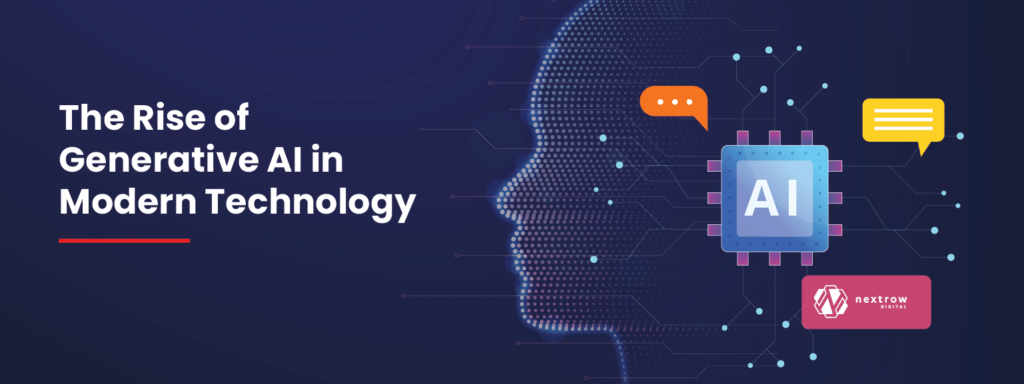
Generative AI, a branch of artificial intelligence, has gained immense prominence due to its advanced deep learning algorithms and increased computational power. This technology has made a profound impact by revolutionizing various sectors. It can create highly realistic images, compose music that rivals human creativity, and even generate written articles that are indistinguishable from those crafted by humans.
In essence, generative AI is at the forefront of innovation, offering transformative solutions across a wide range of fields, from art and entertainment to content creation and beyond. Its remarkable ability to generate content that is both novel and high-quality is propelling it to the forefront of technological progress, making it a powerful tool for businesses and industries seeking innovative solutions.
The Future of Intelligent Marketing
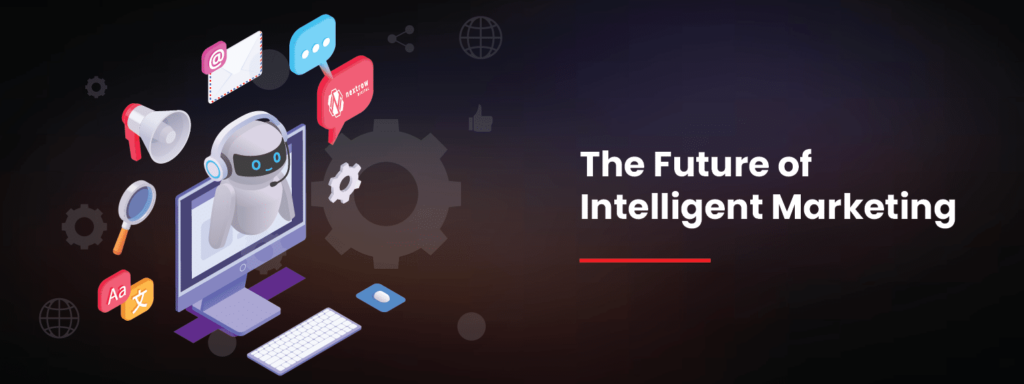
Generative AI is poised to redefine the landscape of marketing. By harnessing this technology, marketers can streamline their processes and envision a data-driven future. It automates key marketing tasks such as content creation and personalization, freeing marketers to focus on strategy and creativity.
“The Intersection of Generative AI and Productivity (Marketing: Envisioning a Data-driven Future)” refers to the point at which generative artificial intelligence (AI) and productivity meet within the context of marketing, while simultaneously looking ahead to a future centered around data-driven strategies.
Generative AI, with its content creation and data interpretation abilities, has the potential to enhance productivity in marketing significantly. Automating tasks like content creation and personalization empowers marketing professionals to allocate more time and energy to strategic and creative aspects of their work.
Simultaneously, this integration of generative AI in marketing represents a forward-looking perspective. It emphasizes the importance of data in shaping marketing strategies, emphasizing that a data-driven approach is the way forward. By leveraging GenAI, marketers can anticipate and adapt to market changes more effectively and create personalized experiences for their target audience, ultimately driving better business results in the digital age.
Future of Marketing, Powered by AI
Leveraging GenAI for Data Management
- Importance of Data Quality and Quantity
Data is the lifeblood of AI and quality matters. High-quality data ensures the reliability and accuracy of AI models. Generative AI thrives on vast quantities of well-curated data, which empowers it to generate valuable insights and content. Inaccurate or insufficient data can lead to biased or flawed outcomes. Therefore, investing in data quality is key to maximizing the potential of generative AI. - The Role of Generative AI in Data Interpretation and Analysis
Generative AI goes beyond automation; it interprets and analyzes data in once-impossible ways. It extracts patterns, generates insights, and provides a deeper understanding of complex datasets. This ability to interpret data in a human-like manner is invaluable for businesses seeking to make informed decisions, drive innovation, and stay ahead in a data-driven world.
Incorporating generative AI into your data management strategy can elevate your organization’s capabilities, ensuring data is not just collected, but truly harnessed for success.
Three Foundational AI Principles
Responsible and ethical use of GenAI necessitates adherence to three critical principles:
- Integrity in AI Development: Developers must ensure fairness, transparency, and accountability in generative AI models, including the evaluation and mitigation of any biases present in the training data.
- Transparency in Data Usage: Users should be informed about how their data is used and have control over its usage. Clear communication and transparency in data collection build trust between businesses and their customers.
- Security and Privacy Considerations: With generative AI heavily reliant on data, robust data protection measures are paramount to safeguard sensitive information and maintain customer trust.
Unlocking ROI with Real-time Data
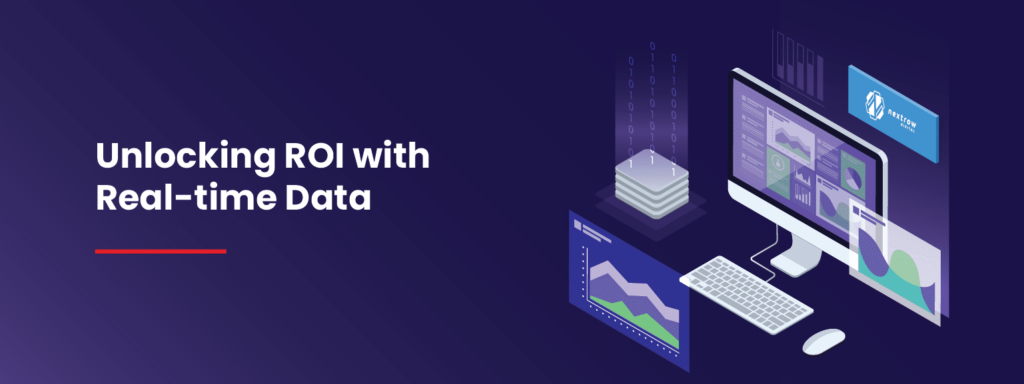
Real-time data is a game-changer for businesses. GenAI aids organizations in harnessing the power of real-time data by processing and interpreting it swiftly. This enables businesses to adapt rapidly to market changes, optimize their operations, and unlock higher returns on investment.
Key Business Benefits of Immediate Data Access
Generative AI offers several benefits for businesses seeking immediate data access:
- Data-Driven Decision-Making: Immediate access to data allows businesses to make decisions based on real-time information. This enables them to respond swiftly to changing market conditions and make more informed choices.
- Optimized Operations: Real-time data access helps organizations optimize their processes and operations. By continuously monitoring data, businesses can identify areas that need improvement and take corrective actions promptly.
- Improved Marketing Strategies: In the context of the content you provided, immediate data access is particularly valuable for marketing. Marketers can use real-time data to adjust and refine their strategies, ensuring they are effectively targeting their audience and adapting to changing consumer preferences.
- Enhanced Customer Experiences: With immediate access to data, businesses can provide more personalized and responsive customer experiences. They can quickly address customer inquiries and adapt their services based on customer behavior and feedback.
- Higher Returns on Investment (ROI): Timely access to data helps organizations optimize their resources, reduce wastage, and make investments that are more likely to yield higher returns. This ultimately leads to improved financial performance.
- Optimizing Business Decisions: Swift real-time data analysis and interpretation empower businesses to make data-driven decisions promptly. This optimization enhances marketing strategies, enabling more effective audience targeting and improved business outcomes.
- Large Language Models: Large language models, like OpenAI’s GPT-3, exhibit remarkable text generation capabilities, transforming marketing efforts in content creation, chatbots, and customer interactions.
What is a Data Cloud?
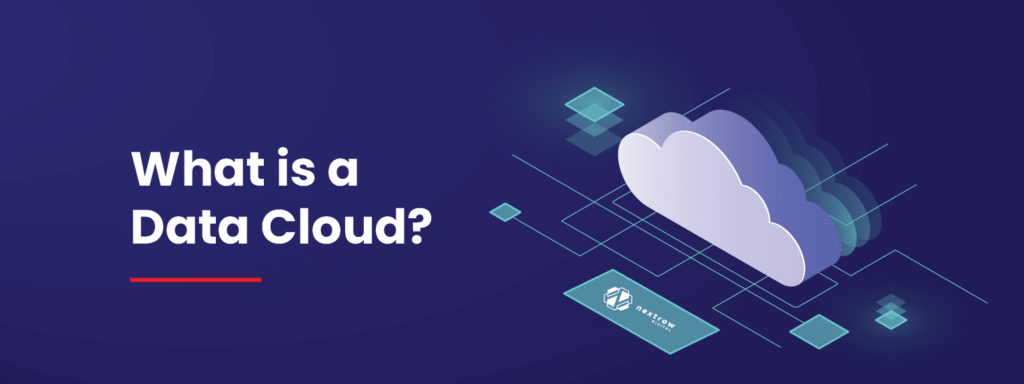
The data cloud is a network of interconnected, scalable computational resources designed for data processing and analysis. Leveraging large language models, such as GPT-3, it uncovers insights, patterns, and trends in vast textual data. This powerful tool enables businesses to harness the potential of generative AI algorithms for data analysis and interpretation.
Harnessing the Power of GenAI for Salesforce
Generative AI offers Salesforce Developers exciting advantages across various areas.
- In text generation, Natural Language Understanding (NLU) models, like GPT-4, can craft human-like responses and even generate articles based on prompts, streamlining content creation for customer interactions, chatbots, and marketing campaigns.
- In graphics, Generative Adversarial Networks (GANs) with computer vision capabilities create impressive visuals, such as fashion designs or realistic human faces, enhancing user experiences by automating the creation of dynamic visual assets for applications.
- For software development, Generative AI simplifies the process by generating functional code snippets, templates, or application scaffolding from large code repositories. This accelerates development and allows developers to focus on strategic and creative aspects.
Generative AI revolutionizes the development workflow, enabling rapid prototyping, intelligent data analysis, personalized user experiences, and enhanced productivity. Developers can quickly prototype and refine ideas, analyze vast amounts of data for insights, create dynamic user experiences, and automate repetitive tasks, leading to more efficient and innovative application development.
Experience our proven personalized marketing campaigns.
Why Choose NextRow?
- NextRow excels in ensuring the integrity, transparency, and security of AI implementations, aligning perfectly with ethical AI principles.
- Our proficiency in integrating real-time data access with large language models like GPT-3 opens the door to rapid adaptation and competitive advantage.
- In collaboration with us, companies can unlock the transformative power of generative AI, elevate their marketing strategies, and drive business success in the digital age.
- We take pride in being honored twice in the Inc. 5000 list as one of the fastest-growing companies in the United States.
In Conclusion
The importance of data for generative AI in marketing is undeniable. By embracing generative AI, businesses can unlock the potential of real-time data access, optimize decision-making, and gain valuable insights into customer behavior and preferences. Integrating generative AI with data management practices presents new opportunities for marketers to enhance productivity, deliver personalized experiences, and drive business success in the digital era. Take the next step in revolutionizing your marketing strategy with Salesforce Service and experience the transformative power of generative AI.
Next-Gen Mobile App Analytics: Step-by-Step Guide
We’ll delve into the vital realm of mobile analytics, addressing common implementation challenges businesses face. Moreover, by highlighting these pain points and then exploring the key role played by the AEP Mobile SDK in enhancing analytics capabilities. Additionally, we’ll track the evolution of the AEP Mobile SDK over time and guide you through a seamless migration process.
Discover how extending analytics with the Edge Network can further empower your mobile app analytics. Real-world success stories will provide practical insights, and we’ll conclude by offering actionable strategies to elevate your mobile app analytics with NextRow’s expertise.
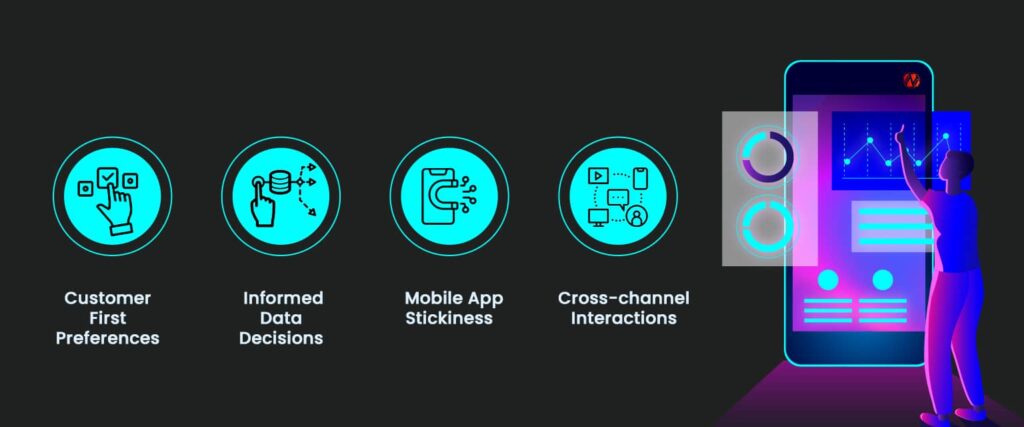
The Importance of Mobile Analytics
- Customer First Preferences
In the age of customers, where customer expectations are at an all-time high, businesses need to prioritize delivering personalized and seamless experiences. Studies show that 54% of customers have higher expectations from brands than they did a year ago. Mobile analytics provides valuable insights into customer preferences, enabling businesses to meet and exceed these expectations. - Informed Data Decisions
Data is the driving force behind decision-making in the business world. Having a robust understanding of data is essential to make informed decisions that lead to cost savings and improved ROI. Mobile analytics provides businesses with the necessary knowledge to effectively analyze and utilize data collected from mobile apps. - Mobile App Stickiness
With a staggering 7.1 billion mobile app users worldwide, the revenue generated by mobile apps is projected to reach over $935 billion by 2023. To maximize app usage and engagement, businesses need to ensure app stickiness. Mobile analytics helps identify factors that contribute to app retention and loyalty, enabling businesses to improve user experiences and drive revenue. - Cross-channel Interactions
In an interconnected digital landscape, understanding customer behavior across multiple channels is crucial for success. Mobile analytics offers a unified view of the customer, creating a comprehensive customer profile that helps businesses tailor marketing efforts and deliver personalized experiences.
Ready to overcome these challenges with seamless mobile analytics implementation?
Challenges in Mobile Analytics Implementation
- Data Standardization
With data coming from various sources, ensuring data standardization becomes a challenge. The presence of cluttered data sources and the need for proper data governance and modeling can make it difficult to extract meaningful insights from mobile analytics. - Cross-platform Support
Different mobile platforms have specific features and frameworks. Dealing with these variations and anticipating future frameworks can pose challenges in implementing mobile analytics that work seamlessly across platforms. - Consensual Library Version
An average mobile app has 14-17 Software Development Kits (SDKs), each with its own development and validation cycles. Coordinating these SDKs and maintaining a consensual library version can be complex and time-consuming. - Unified and Real-time Experiences
In a customer-centric approach, businesses need to deliver consistent experiences across self-service channels. Achieving this level of consistency and real-time responses requires robust mobile analytics capabilities.
AEP Mobile SDK’s Role in Enhanced Analytics
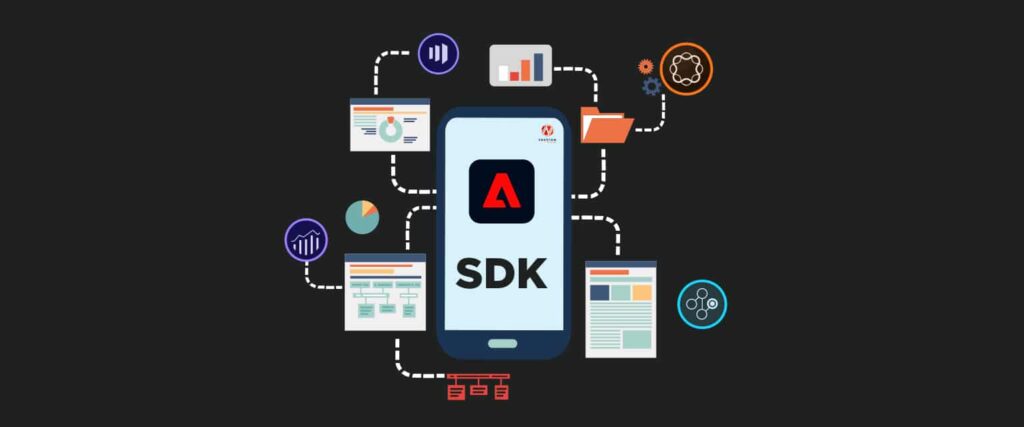
To address these challenges and enable businesses to harness the power of mobile analytics effectively, Adobe has developed the Adobe Experience Platform (AEP) Mobile SDK. Let’s explore why this SDK is the ideal solution for next-gen mobile app analytics:
- XDM-Based Data Collection
AEP Mobile SDK ensures the standardization of customer experience data by collecting data based on the Experience Data Model (XDM), a publicly documented specification. This ensures consistency and compatibility in data collection and analysis. - Cross-Platform Implementation
The AEP Mobile SDK offers support across popular mobile platforms such as React, Flutter, and Roku. This cross-platform compatibility simplifies the implementation process and provides flexibility for developers. - Solitary Library Version
The SDK powers end-to-end engagement with high performance and extensibility, minimizing the need for multiple 3rd party solutions. This results in a streamlined implementation process and ensures continued compatibility and support. - End-of-Support
Adobe provides ongoing support for AEP Mobile SDK, ensuring compatibility with evolving technologies and customer needs. This support includes dedicated forums and customer care, offering peace of mind to businesses implementing the solution.
Pro Tip: Enhance your analytics with AEP Mobile SDK’s XDM-based data collection, cross-platform support, and unified library version for optimal performance. Watch NextRow’s certified expert-tailored strategy!
Seamless Migration to AEP Mobile SDK
To transition from existing mobile analytics solutions to AEP Mobile SDK, businesses can follow a structured migration process:
- Initial Configuration
Create schemas and set up data streams to establish the foundation for data collection and analysis. - Data Collection Tags
Configure tags and install the required extensions to collect the specific data needed for analysis. - Install Mobile SDKs
Implement the Adobe Experience Platform Mobile SDK into the mobile app to enable data collection and analysis. - Collect App Data
Track lifecycles data and events such as page views and user actions within the mobile app to gather valuable insights. - Analytics Validation
Validate the server calls made by the mobile app using assurance methods to ensure accurate data collection and analysis.
Extending Analytics with Edge Network
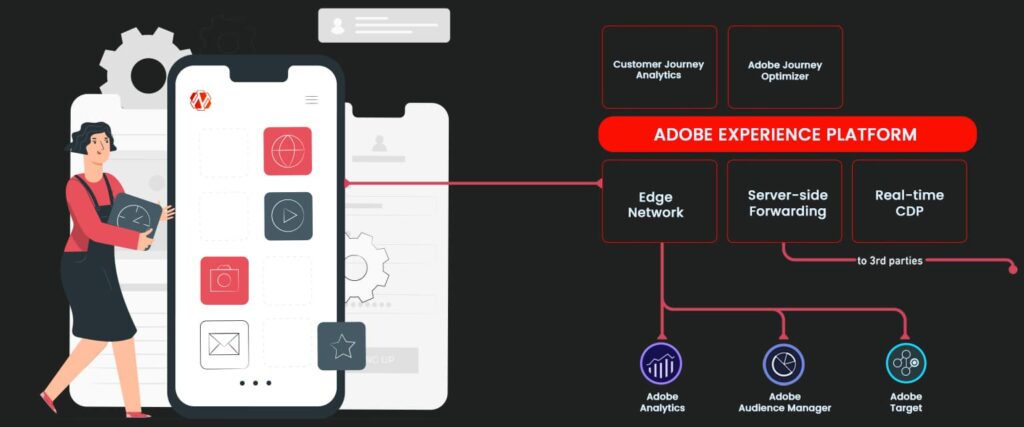
To further enhance mobile app analytics capabilities, businesses can leverage various extensions within the AEP ecosystem. Some key extensions include:
- Mobile Core and Profile
Enrich customer profiles by capturing cross-channel interactions and integrating them with the AEP Real-Time Customer Data Platform (RT-CDP). - Consent for Edge Network
Ensure compliance with data privacy regulations by implementing consent management for data collection and processing. - Identity for Edge Network
Enable seamless user authentication and identification across various touchpoints. - AEP Edge Network
Leverage the power of edge computing to deliver real-time experiences and reduce latency in data processing. - AEP Location Service
Utilize location-based analytics to gain insights into customer behavior and optimize targeting strategies. - AEP Assurance Extension
Validate analytics implementation, ensure accurate data collection, and troubleshoot issues in real time.
Helpful Hint: Understanding your customers’ preferences and using data insights to make informed decisions are key drivers for success in today’s customer-centric world.
Real-World Business Success Stories
- Unified Profiles and Segments
Capturing cross-channel customer interactions and unifying customer profiles with AEP RT-CDP enables businesses to deliver personalized experiences consistently. - Location-based Analysis and Targeting
Analyzing in-store and in-branch visits without purchase helps businesses understand customer interests and behavior. Location-based targeting provides insights into customer preferences and enables effective competitor analysis. - Embrace AI/ML Capabilities
Leveraging AI and ML models on data from different sources allows businesses to score visitors based on their behavioral and transactional data. This enables personalized targeting and predictive analytics, resulting in enhanced customer experiences.
Insights and Actionable Strategies for Your Business
- Bring Your Mobile App Data into the Marketing Mix
Leveraging mobile app data through analytics is essential for businesses to make data-driven marketing decisions and deliver exceptional user experiences. - Adobe Mobile SDK Evolution
Understanding the evolution of Adobe’s Mobile SDKs provides businesses with insights into the advanced capabilities and future-proof solutions offered by AEP Mobile SDK. - Establish Process and Navigate Technical Landscapes
Collaborating with partners and focusing on customers’ needs helps navigate the complex technical landscapes involved in implementing mobile app analytics effectively. - Explore and Innovate Marketing Techniques
Embracing futuristic approaches with Customer Data Platforms (CDPs) like AEP expands marketing capabilities and enables innovation in targeting, personalization, and customer experience delivery.
Elevate Your Mobile App Analytics with NextRow
Next-gen mobile app analytics is no longer optional; it’s essential for success in today’s digital picture. NextRow, with its global offshoring delivery centers and flexible engagement models, is your partner of choice.
By teaming up with NextRow, you’ll:
- Unlock Full Potential: Leverage the power of mobile app analytics for data-driven insights.
- Reduce Costs: Save 50-60% on IT development expenses.
- Stay Ahead: Stay at the forefront of innovations in analytics.
- Enhance Customer Experiences: Deliver tailored experiences that keep customers engaged.
- Navigate Complexity: We’ll guide you through implementation challenges.
Boost your mobile app analytics with NextRow and stay ahead in the digital world. Take the step towards success and transformation. Contact us today to start your journey to excellence!
What is the New Inside Adobe Dynamic Chatbot?
Today’s digital marketing demands a dynamic, responsive, and intelligent approach. Enter Adobe Dynamic Chat – an integral feature of Marketo Engage that promises to revitalize your digital communication strategy.
When Dynamic Chatbot was first introduced, its aim was clear – to offer foundational conversation automation tools that effortlessly integrate with your cross-channel marketing strategy. Adobe, never one to rest on its laurels, decided to amplify its functionalities. And the best part? All these added features come at zero extra cost.
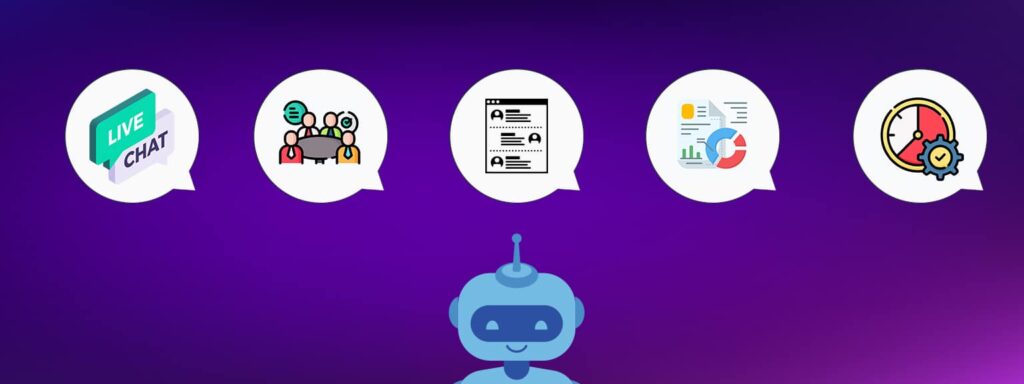
What’s new in Adobe Dynamic Chat?
1.
Expanded Conversational Avenues:
- Live Chat: Directly engage with your site visitors, helping to speed up opportunity creation, qualification, and meeting bookings.
- Sales Agent Workbench: Equip your sales agents with real-time insights and a comprehensive dashboard.
- Live Chat Seats: Empower up to 5 sellers with the capability to chat live with potential customers.
2.
Swift Qualification & Meeting Bookings:
- Conversational Forms: Make your Marketo Engage forms more interactive, enabling instant meeting bookings and further lead information collection.
- Conversational Flows SDK: Enhance any digital CTA with embedded conversational marketing experiences.
- 100 Engaged Conversation Trial: Dive into engaged customer conversations or upgrade to Dynamic Chat Prime for even more capabilities.
3.
Comprehensive Insights:
- Performance Dashboards: Understand the performance of your live chats and sales agents at a glance.
- Native Lead Source Tracking: Incorporate dynamic chat as a native lead source for streamlined tracking and reporting.
4.
In-Depth Sales Insights:
- Live Feed Activities: Stay updated with chat activities in real-time, ensuring marketing and sales alignment.
- Chat Transcripts: Equip your sales team with transcripts and data to prepare them for subsequent interactions.
5.
Advanced Segmentation & Automation:
- New Triggers & Filters: Optimize smart lists and campaigns with new activity filters and triggers.
- Trigger Tokens: Personalize internal workflows based on chat activities.
6.
Unparalleled Control Over Conversations:
- Domain Preferences: Control conversational flows and maintain data hygiene with blocked and allowed email domains.
- Meeting Availability Settings: Allow agents to specify their availability for streamlined scheduling.
Dynamic Chat redefines the integration form with your cross-channel marketing strategy
Stepping Up Your Game: Adobe Dynamic Chat Prime

For those looking to fully harness the capabilities of conversational automation, Adobe introduces Dynamic Chat Prime. This upgraded version removes conversation limits, integrates with more calendars, and enables a richer experience through Adobe Sensei GenAI’s capabilities. From summarizing conversations for sales agents to transforming chatbots into brand ambassadors, the Prime version truly brings your chat game to the next level.
New Features of Dynamic Chat (Launched in Feb 2023)

We’re thrilled to let you know about some great new features that have been added to Dynamic Chat. These updates are designed to make your experience even better and more efficient. Dynamic Configuration is the best trial practice.
- Roles and Permissions
Managing who can access Dynamic Chat has gotten easier with the introduction of roles and permissions. You can now create your own user profiles and assign different levels of access to each profile. Marketo also set up three default profiles: Marketing Admin, Marketing User, and Calendar Agent.
- Globalization of Static Content
While you’ve been able to create dialogues in different languages, they’ve taken things a step further. System-specific content that used to appear only in English will now be automatically translated based on the visitor’s language selection at the dialogue level.
- Search in Stream Designer
Handling long dialogue streams is now simpler thanks to the new search function. You can easily search for specific text within a dialogue and quickly make any necessary changes. Marketo has even added keyboard shortcuts like ‘cmd+f’ or ‘ctrl+f’ to make the process even smoother.
- Auto-populating Inferred Data
Leads generated through the chatbot will now be automatically synced with your Marketo Engage instance in nearly real-time. Additionally, visitor data inferred from their IP will be automatically filled into the correct inferred attributes, making lead capture more efficient and accurate.
- Improved Dialogue Preview
The Dialogue Preview feature has been enhanced for a better experience. When previewing your dialogue, you can now click on icons within the response field to quickly identify and fix errors. This convenient feature allows you to smoothly navigate to the relevant card on your canvas, making editing easier and more efficient.
Propel your business growth with Dynamic Chatbot.
Why Should Companies Trust Adobe Gold Partner: NextRow?
Implementing, consulting, and managing these Adobe services may seem like a mountain to climb. That’s where NextRow, a trusted Adobe Gold Partner, comes into play. Outsourcing these services to experts like NextRow ensures a seamless and efficient integration of these advanced features into your existing framework. The result? Enhanced user experiences, streamlined operations, and a solid ROI.
In conclusion, Adobe Dynamic Chat, with its revamped features, provides companies with the tools to redefine their conversational marketing strategies. When coupled with the expertise of NextRow, businesses can ensure they are making the most of what Adobe has to offer.
Looking to delve deeper into the world of Adobe Dynamic Chat Prime? Stay tuned for our next blog where we unpack the myriad reasons and benefits of upgrading.
Third-Party Cookies: Why CNAME in Adobe Analytics?
Do you frequently stumble upon the term ‘CNAME’ when browsing the Adobe Analytics Forum? Especially in discussions around third-party cookies or cross-domain tracking. You might be under the impression that a CNAME implementation for Adobe Analytics will magically bypass all the issues associated with third-party cookies and enable cross-domain tracking. But is that always true?
The short answer: perhaps not always. Let’s dive deep to understand what CNAME truly means, why you should consider implementing it, and when it’s best to do so.
Third-Party Cookies and Cross-Origin Requests: A Brief Overview
Third-Party Cookies: These are cookies stored in your browser by domains other than the one you’re visiting.
Cross-Origin Requests: These are requests made from your browser to domain servers other than the one you’re visiting.
Book a call with an expert to have a clear picture!
Breaking It Down: A Practical Example

Imagine you’re browsing a website – let’s call it “nextrow.com”. You click on a blog post link from Twitter, and your browser begins to fetch the page content. During this process, the server for “nextrow.com” delivers the webpage content and determines whether to set cookies in your browser. For instance, a cookie named ‘visitor id’ might be placed with a unique identifier for visitor tracking.
In this scenario, your browser requests content from “nextrow.com” and receives cookies from the same domain. This is a classic example of a Same-Origin Request, and the cookies in this case are termed First-Party Cookies.
Now, let’s add a twist. Suppose “nextrow.com” uses images hosted on another website, let’s name it “nextrow.net”. Even though you’re on “nextrow.com”, your browser fetches a picture from “nextrow.net”. During this process, “nextrow.net” might also set its own cookies in your browser. Here, the image request to “nextrow.net” is a Cross-Origin Request, and the cookies set by “nextrow.net” are Third-Party Cookies.
Fast forward to your next visit. Your browser remembers and sends the cookie information to “nextrow.com” and “nextrow.net”, helping these sites offer personalized content. However, cookies remain domain-specific. This means that “nextrow.com” can’t access cookies set by “nextrow.net” and vice versa. It’s crucial to remember this domain specificity, as it plays a significant role in digital tracking and personalization.
Potential Concerns with Third-Party Cookies and Cross-Origin Requests

- While third-party cookies benefit organizations by allowing them to target users effectively, there are privacy concerns. Even if cookies for personalization are harmless, some websites might expose sensitive user data to external parties. Given these vulnerabilities, browsers like Safari, Brave, and Firefox have grown increasingly wary of third-party cookies. Google Chrome has even announced that it will phase out third-party cookies by 2023.
- Similarly, cross-origin requests face scrutiny. Secured browsers and browser extensions are increasingly blocking these requests, especially if they’re primarily for tracking, rather than essential page content like images.
- As the digital age continues its rapid expansion, understanding visitor behaviors is critical. This understanding is hinged on the accuracy of tracking methodologies employed by analytics platforms. Adobe Analytics, a titan in the world of analytics, has two key methods for identifying visitors. Let’s dissect them to grasp the intricacies involved.
Tracking without Experience Cloud ID Service
Imagine NextRow has implemented Adobe Analytics on its website. When a visitor lands on the website, a flurry of interactions begins:
Request & Response:
Upon page load, the browser communicates with NextRow’s domain server. Almost simultaneously, Adobe sends a request to its servers, which may be adobedc.net, 2o7.net, or omtrdc.net. Adobe’s primary goal here? Visitor identification. The system then sends back a visitor ID.
Storage:
This visitor ID is stored in a cookie (‘s_vi’) within Adobe’s tracking domain. This ensures that when you return, Adobe recognizes you.
Third-Party Cookies & Cross-Origin Requests:
The process introduces us to the world of third-party cookies and cross-origin requests. When you, the visitor, access NextRow’s website, your browser reaches out to Adobe’s domain server for required tracking information. While you’re on NextRow’s domain, cookies from Adobe’s domains (like adobedc.net) are set. These are third-party cookies.
The catch? Browsers may block these third-party cookies. If they do, every visit to NextRow feels like the first time – there’s no digital memory of you. Worse, if the browser blocks cross-origin requests, tracking is entirely disabled. Adobe does have a backup plan: a fallback cookie (‘fid’). If the primary cookie is blocked, this backup cookie is placed on NextRow’s domain, becoming a first-party cookie. However, cross-origin requests remain a conundrum, and so does identifying visitors across multiple domains.
And for those wondering, this remains true if tags are loaded via a Tag Manager. Any prevention of cross-origin requests hinders tag rendering.
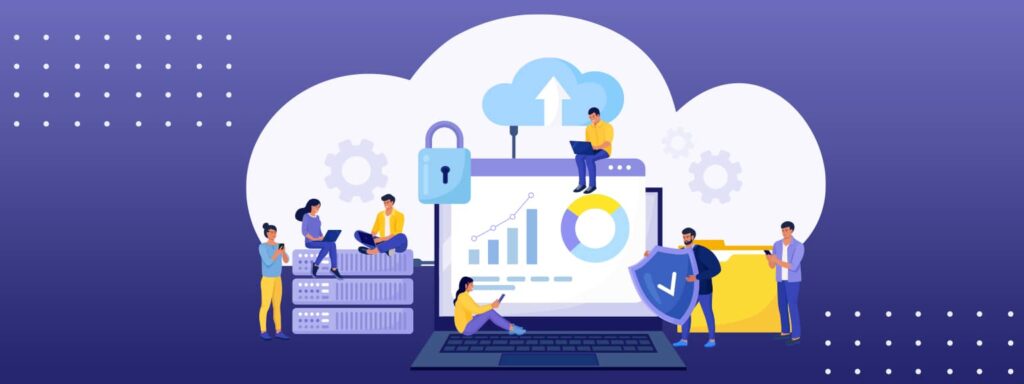
Tracking with Experience Cloud ID Service
The Experience Cloud ID Service changes the game. Here’s how:
Domain-Based Cookies:
With the Experience Cloud ID Service, cookies are set on NextRow’s domain, not Adobe’s tracking domains. The browser sends a request to Adobe’s Data Collection Server (DCS) at dpm.demdex.net, which responds with a visitor ID. This ID, stored in an ‘AMCV’ cookie, now rests on NextRow’s domain.
Cross-Domain Tracking:
Adobe also sets an additional ‘dpm’ cookie on dpm.demdex.net. This is essential for tracking a visitor across different domains. While the primary cookie ensures that Adobe recognizes the visitor on NextRow, the ‘dpm’ cookie allows Adobe to regenerate the same visitor ID even across varied domains.
First-Party vs. Third-Party:
As visitors browse NextRow’s website, they communicate with Adobe servers. Now, the cookies are first-party, being set on the same domain they’re browsing. This guarantees accurate visitor identification. But, if the ‘dpm’ cookie (a third-party cookie in this context) on dpm.demdex.net is blocked, cross-domain tracking is off the table.
To clarify, when we discuss cross-domain tracking, we’re talking about distinct domains, not subdomains under a parent domain. For instance, if NextRow had subdomains like blog.nextrow.com, Adobe’s Experience Cloud ID Service can set the ‘AMCV’ cookie on the main domain, ensuring uniform accessibility across all domains for visitor identification.
NextRow can assist you with your learning, get our training service!
In Nutshell
While CNAME offers promising solutions within Adobe Analytics, it’s crucial to grasp its underlying mechanisms and potential limitations. This knowledge empowers organizations to make informed decisions that not only optimize their analytics strategies but also respect user privacy.
Both methods—CNAME and traditional third-party cookies—come with their own set of advantages and drawbacks. As we navigate this complex terrain, adapting and employing the right strategies becomes increasingly vital.
NextRow can serve as your trusted partner in navigating this complex terrain. With decades of experience in personalized MarTech solutions, we blend creativity with strategy to offer tailored content strategies that align with your unique business goals, strengthening customer connections along the way. Our track record of assisting numerous organizations demonstrates our expertise and updated skills, making us the ideal choice to help your organization thrive.
Join hands with NextRow to unlock the potential of Adobe Analytics and chart your path to success. Our commitment to innovation and client satisfaction has earned us a spot on the Inc 5000 list, a testament to our dedication to helping businesses like yours excel in the ever-evolving digital world.
CNAME Concepts Beyond Third-Party Cookies Limitations
In our previous blog, we delved deep into the intricacies of CNAME in Adobe Analytics and highlighted the importance of grasping third-party cookies and cross-origin requests.
With the digital sphere becoming increasingly complex, it’s paramount for businesses to be well-acquainted with the pros and cons of available tools and methods. As we journey through this ever-evolving digital era, the expertise and seasoned skills of NextRow’s professionals stand out as a beacon, guiding countless organizations in making astute decisions. Let’s continue this exploration and see how your organization can benefit from a deeper understanding and strategic implementation.
In today’s era of data privacy and security, it’s imperative to understand the nuances of Adobe Analytics and the impact of CNAME on tracking. Let’s delve deep into the concept and see how it interacts with the challenges posed by third-party cookies and cross-origin requests.
What is CNAME in Adobe Analytics?
Simply put, a CNAME is a mechanism to mask Adobe’s Data Collection Server (DCS) with a domain of our own. Rather than directing requests to Adobe’s domains (like adobedc.net, 2o7.net, or omtrdc.net), the data goes to a custom domain server first. This server then forwards the data to Adobe’s domain servers. Essentially, the Adobe domain servers are concealed behind our own, making it appear as if requests are coming from a single domain to the browser.
For instance, if we wanted to set this up for nextrow.com, a subdomain such as stats.nextrow.com or metrics.nextrow.com would be created. This is then linked to Adobe for data routing. Adobe provides comprehensive documentation for CNAME configuration.
And if you’re ever in doubt, NextRow expert is just a call away!
Beyond Third-party Cookie Limitations
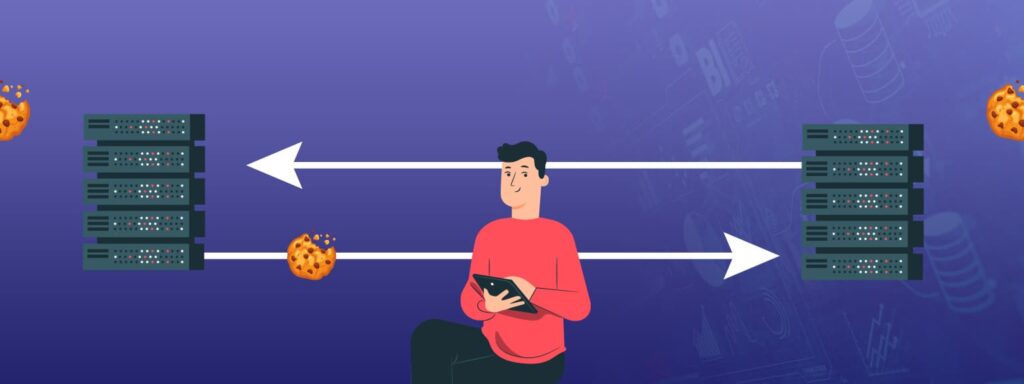
Without Experience Cloud ID Service:
On loading a webpage, the browser sends a request to our domain server for processing and returning an HTML page. Concurrently, Adobe also sends a visitor identification or tracking information request. But now, this request goes to our domain (like stats.nextrow.com) instead of Adobe’s DCS. Since both requests are from the same domain, they’re treated as the exact origin. This allows for setting first-party cookies. Hence, with CNAME in place, issues with third-party cookies and cross-origin requests are sidestepped by keeping everything in a first-party context.
Yet is cross-domain tracking possible with this method? For distinct domains, the answer leans towards no. If someone were to visit another domain after nextrow.com, Adobe could access previous cookies since they’re tied to stats.nextrow.com. However, in reverse scenarios, complications arise.
Adobe suggests using domain-specific CNAMEs if managing multiple domains. This way, every domain can operate within the first-party context. Yet, cross-domain tracking remains elusive without third-party cookies.
With Experience Cloud ID Service:
The Experience Cloud ID Service sets cookies only on the organization’s domain. With a custom tracking domain, Adobe doesn’t rely on its default DCS, thereby dodging cross-origin request limitations. While there are methods to redirect domains for cross-domain tracking, they don’t entirely address the core issue.
However, there’s a provision to share visitor IDs between domains using ‘appendVisitorIDsTo’ when third-party cookies face browser restrictions. But for this, navigation must occur between domains and not in isolation.
CNAME Implementation: The Summary
Implementing CNAME in Adobe Analytics without the Experience Cloud ID Service combats issues with cross-origin requests and third-party cookies.
With Experience Cloud ID Service, CNAME only tackles cross-origin requests since the cookies are inherently first-party.
Using CNAME doesn’t enable seamless cross-domain tracking across unique domains.

Important Side Note: Don’t fall into the trap of believing that a first-party context is a panacea. Apple, in November 2020, updated its policies to apply restrictions on cookies set through CNAME or Experience Cloud ID Service, categorizing returnees after a day or a week (based on ITPs) as new. Always be aware of the evolving landscape of digital privacy!
In a nutshell, while CNAME does offer certain advantages, a comprehensive understanding of its limitations is essential. As technology advances, one must continually adapt and stay informed.
Pro Tip: Harnessing the power of first-party data is paramount in a world moving beyond third-party cookies. A Customer Data Platform (CDP), like AEP, proficiently captures unique visitor profiles, collecting crucial details such as email addresses and phone numbers. Elevate your business insights with CDP, and dive deeper into the Adobe Analytics blog for better understanding.
How NextRow is helping Businesses?
Organizations need trusted partners like NextRow to effectively navigate the complexities of Adobe Analytics and harness its full potential, ensuring optimal data-driven strategies and maximized ROI. From implementations to hourly remote consulting to fixed monthly packages, we offer seamless workflow setup and integrations.
With our Adobe Analytics Managed Services, you can scale up the performance of your Adobe Analytics application with confidence. Let us know whenever you need emergency support; we have a global team with 24*7*365 support centers. Get started today or book a call for a free consultation.

